Backpacking in Vietnam: Everything You Need to Know
I’ve been backpacking in Vietnam twice. Once for two weeks, and then a few years later for five. It’s one of my most favourite countries I’ve ever been to, mainly because backpacking through Vietnam is just so easy.
I mean, don’t get me wrong. You’ll need to do your research on what backpacking Vietnam is really like but as a total advocate for all things Vietnam, this ultimate guide will help you with everything you need to know.
Basics of backpacking through Vietnam
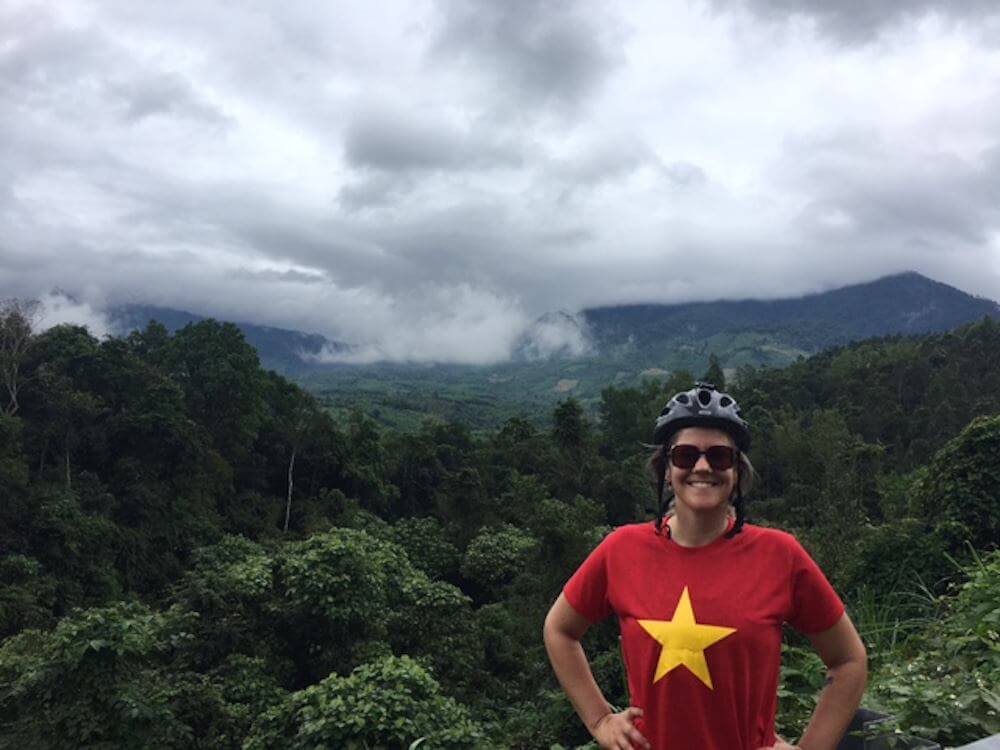
Vietnam is super backpacker friendly. There’s cheap accommodation in every city, the 7/11 shops will be your food friend, there’s lots of beautiful things and places to see that you don’t have to pay for, and the exchange rate is great.
Vietnam is a great starter country for anyone who’s off backpacking on their own for the first time.
Where to backpack in Vietnam
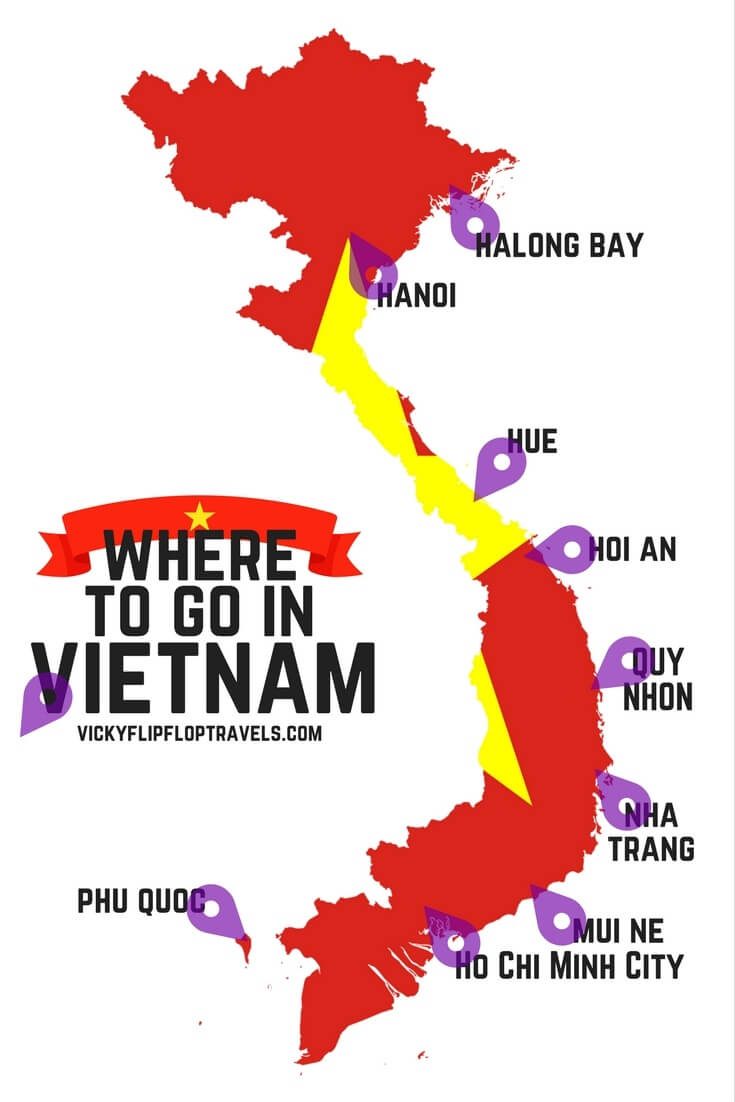
With the country being so long and thin there’s a definite route that most travellers tend to follow when they’re backpacking Vietnam. It’s all pretty straight forward – you can go from top to bottom quite easily, checking in to all the main hot spots as you go.
So, from the top:
Backpacking Halong Bay
Backpackers normally visit Halong Bay from Hanoi, to spend some time on opackingne of the amazing junk boats there. I spent a night, but would definitely recommend two, just to make the most of it.
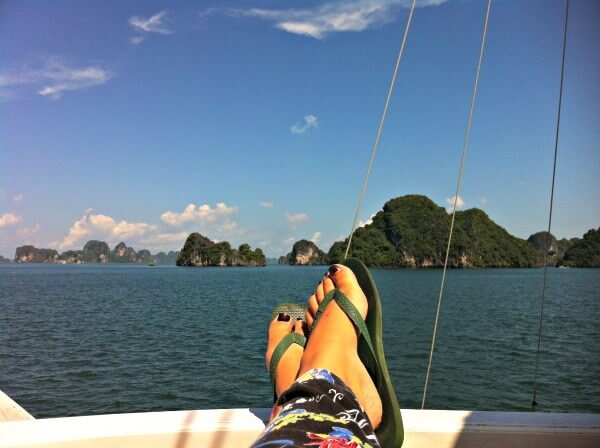
In Halong Bay you can expect stunning big cliffs overlooking emerald waters, with junk boats bobbing around to complete the scene. Definitely a must recommend, and you can check out the cool Junk Boats in Halong Bay here.
READ MORE: Is Halong Bay the Most Beautiful Place in the World?
Backpacking Sapa
Sapa is one of the best places to go hiking in Vietnam thanks to all the rice paddies and beautiful scenery. Unfortunately I’ve never been able to make it thanks to the rain, even after booking a then cancelled trip a few years ago. I have it on good authority that the homestays and rice paddies are well worth the physical exertion though.
If you have the time a hike in Sapa is well worth it.
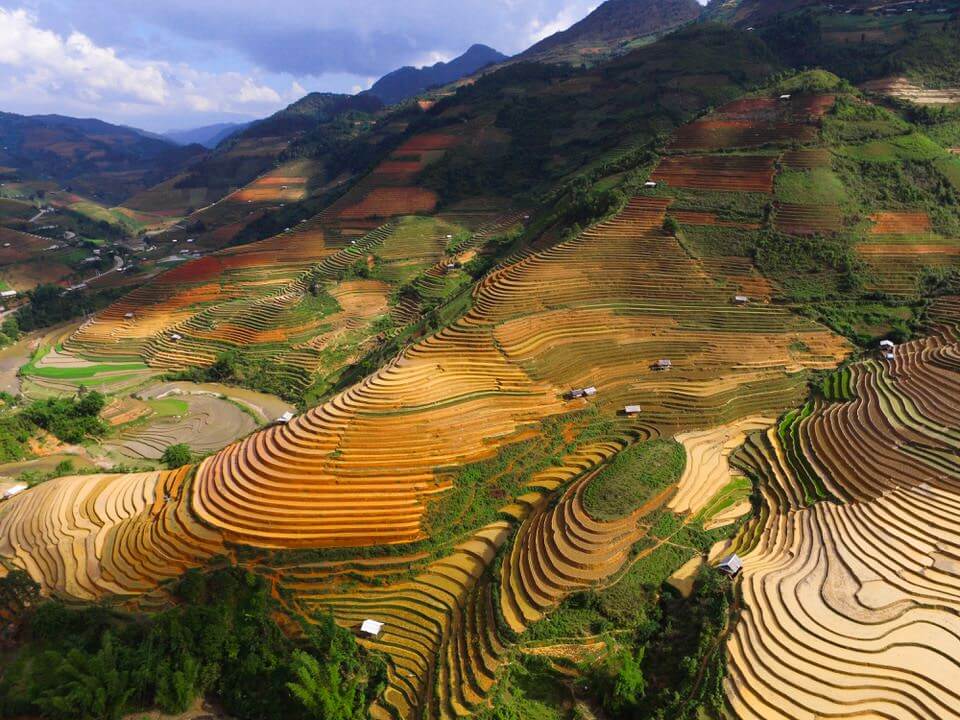
Backpacking Hanoi
Hanoi is well known for two big day trips – the beautiful Halong Bay with all it’s limestone cliffs and junk boats, and Sapa.
It’s a great city – all ancient architecture and shops, restaurants, street stalls and beauty parlours in a labyrinth of an Old Quarter. Top things to do include Ho Chi Minh’s mausoleum – yes you can actually see the old president’s body – the Hoan Kiem Lake and Hoa Lo Prison. Don’t leave without exploring the Thang Long Water Puppet Theatre: it’s bonkers.
Check out all the cool day trips you can take, backpacking in Hanoi.
READ MORE: Just a Few of the Crazy Things I Saw in Hanoi
Backpacking Hue
Hue is surrounded by impressive citadel walls. It was once the main royal residence of the most important families in Vietnam. The rooms were once at the centre of all the decision making in Vietnam, and are now home to a museum.
History buffs will love it here. And for everyone else it’s still definitely worth a look around. It’s the most royal city in all of Vietnam and thanks to all the monuments, tombs and pagodas it’s now recognised as a UNESCO World Heritage Site.
If you can’t be bothered to walk round then you can always call over one of the tuk tuk drivers to take you round and enjoy watching it unfold from the comfort of your seat. Totally worth including in your Vietnam itinerary.
Backpacking Hoi An
Hoi An is my favourite place in all of Vietnam. The quaint town is built around the pretty waterfront. You’ll need to stay at least 2-3 days to enjoy sitting outside as many as possible, to drink Vietnamese coffee.
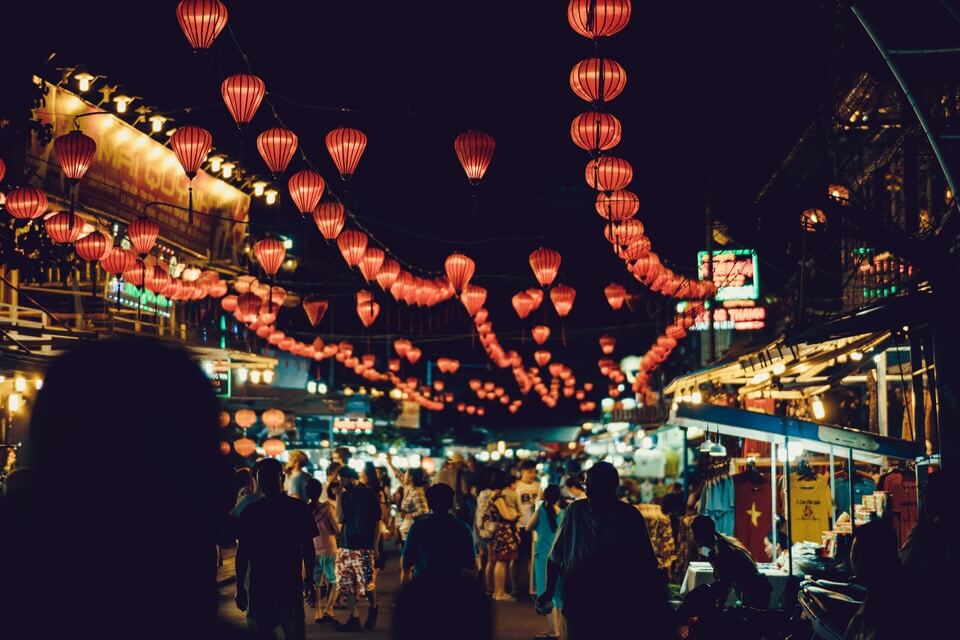
Make sure to visit the waterfront at night to try one of the boat restaurants, and to set off your own candle on the canal.
By day in Hoi An you can rent mopeds or cycles and go down to An Bang Beach, or pay one of the boat peddlers to take you out on a trip.
Hoi An is where everyone gets their suits tailored, and bespoke shoes made for next to nothing. It’s also where you can check out one of the country’s best markets.
If you have time see if you can get out to the Hai Van Pass. It’s a high mountain road famously featured on Top Gear and even more famously cycled by me. Thought I was having an asthma attack on the way up, but the many km of downhill on the way back made it totally worth it.
Go for the easy option and just get a taxi out.
Backpacking Qui Nhon
Quy Nhon, or Qui Nhon, isn’t quite as popular as most of the other places on this list with tourists, but it’s interesting. I went along to check it out and joined a tour to a local village. We went out in one of the little circular boats and saw how they managed to keep up with demand using the traditional means they have.
Quy Nhon felt really rural compared to much of the rest of Vietnam that I saw. Visit here and you’re really out in the sticks – all the more reason!
Don’t leave without having a delicious lunch at one of the waterside restaurants. You can pick your live seafood, and they’ll cook it up for you.
Backpacking Nha Trang
Nha Trang is one of Vietnam’s most popular beach destinations. There’s plenty of history around but also lots to entertain the modern traveller too.
Book on the Funky Monkey Snorkelling Tour and it’ll take you out to see the coastline from the water, and to have a look under it. I did a little write up in my two-week Vietnam itinerary.
Nha Trang is also known for its egg baths. Basically, you sit in an egg shaped bath and they pour mud on you. Seriously. Check out my review of the Nha Trang egg baths I visited back in 2013.
Backpacking Mui Ne
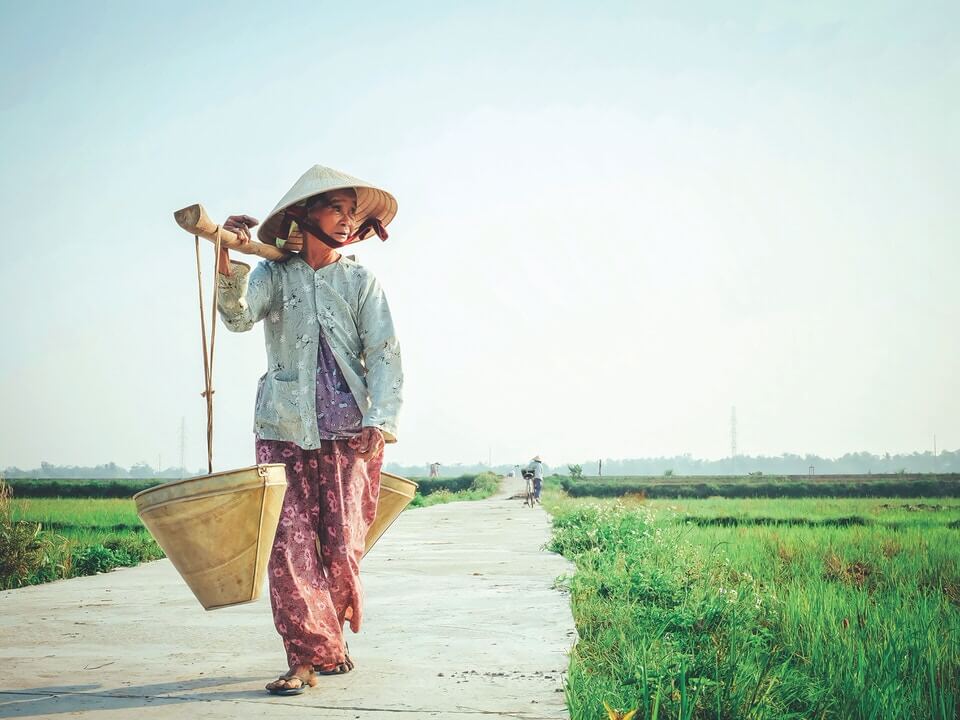
Mui Ne is Vietnam’s surfer town. If you’re travelling Asia for a while it’s easy to get stuck in the laid back vibes here, and the ease of being right by a beautiful beach. Expect a typical surf town, but with Vietnamese food. Yep, I can totally understand why the backpackers love it here so much.
Unfortunately I’ve only ever passed through and haven’t quite had the chance to stay for anything more than a few hours, but I totally would. Surf by morning, Bahn Mi for lunch and chill on the beach all afternoon? Yep, yep and yep.
Backpacking Ho Chi Minh City
Ho Chi Minh City is the business capital of Vietnam. Here you’ll find a cosmopolitan vibe where old buildings stand next to the super modern skyscrapers.
There are definitely a few must dos in Ho Chi Minh City. Haggle some bargains at the Ben Thanh Market, check out the king’s digs at Reunification Palace, go and see the old post office and take a look round Notre Dame Cathedral too.
Make sure to book on a Mekong Delta tour while you’re in Ho Chi Minh City. Go and chat to one of the many tourist information offices to get a good deal. Remember, never accept the first price. Nothing should be more than a few quid in Vietnam – one of the may reasons to love the country so much!
READ MORE: Where to Go in Vietnam
Backpacking Phu Quoc
I spent a week on Phu Quoc island when I was there one February – loved it. The island is a quick plane ride from Ho Chi Minh City, or a bus ride if you’re on a budget.
I rented a moped for the week and had a great time exploring the island from top to bottom. There are beautiful beaches, night markets, snorkelling, scuba diving and a great beach vibe for you to relax into. You can find out more with my post on everything you need to know about Phu Quoc.
Absolutely definitely include a few days or a week in Phu Quoc, if you can!
READ MORE: All the Travel Advice for Phu Quoc You Could Need
Arriving in Vietnam
Chances are you’ll arrive in either Hanoi or Ho Chi Minh City – the two main cities of Vietnam. Knowing what to expect when you arrive into Vietnam is hard – the country is definitely an assault on the sense.
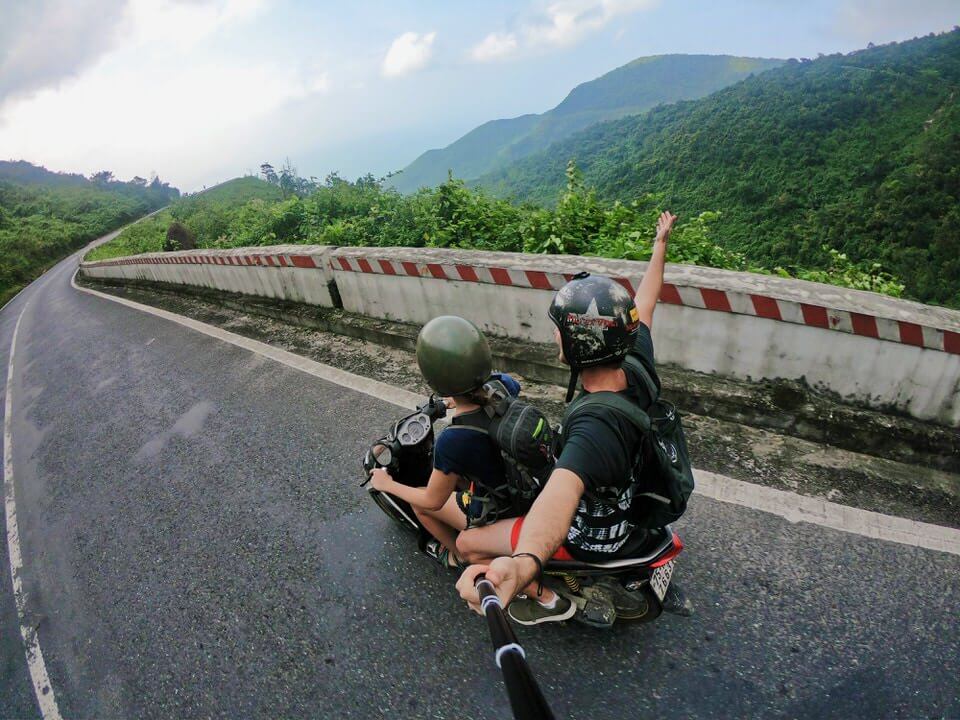
There’s probably a window, a small window, of about half an hour when most visitors are at ease with Vietnam and may think their ideas of the hustle and bustle were wrong. This half an hour usually happens on the drive from the airport into Ho Chi Minh City or Hanoi, and then quickly disappears once in the heart of the cities.
Once safely tucked inside the city’s folds, there’s no holding back the madness and sheer energy the country’s cities have. If you’ve just arrived in on a long flight you need to make sure you’re emotionally ready for the challenge. Prepare yourself for a wide spectrum of noise and excitement, it’ll definitely be entertaining.
Big billboards, shanty towns, endless waves of people, sweaty sun, street markets and no order whatsoever seems to sum up the arrival for backpackers into Vietnam. Add to that some of the friendliest people and best service, and this South Asian gem will soon become a favourite, as it did for me, although there are a few things you should be prepared for… the first being the traffic.
How to Get to Vietnam
The first time I went backpacking in Vietnam I flew with Qatar Airways and did a stopover in Qatar. We had 9 hours in Doha, and managed a little look around, and a sleep. It was definitely an adventure and a cool way to fit in a new place too.
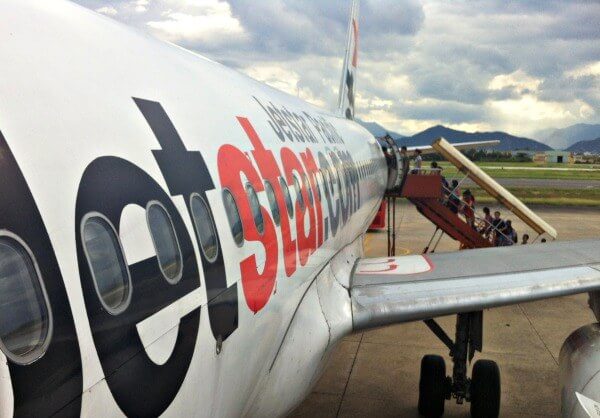
The second time backpacking Vietnam I flew with Etihad and had a 13-hour stopover in Abu Dhabi, which meant I could get out and see the incredible Grand Mosque. Absolutely, totally worth it.
I’d definitely recommend breaking up the journey with a little visit to the Middle East somewhere. I mean, why not?
I always check for flights on Skyscanner. They compare all the best deals for free, with no obligation to buy.
Read more on travel to Vietnam
Interesting Facts About Vietnam to Know Before You Go
11 Great Festivals in Vietnam to Time Your Trip By
Top Tips for Travelling Vietnam Solo
Perfect Week Itinerary for Vietnam
Best travel itineraries for Vietnam
One week itinerary for Vietnam
It’s not unusual to go to Vietnam for one week. It’s a popular stop off on the South East Asia route via Laos and Cambodia. If you’ve just got one week in Vietnam here are a few of the best weeklong itineraries around, from my fellow travel bloggers.
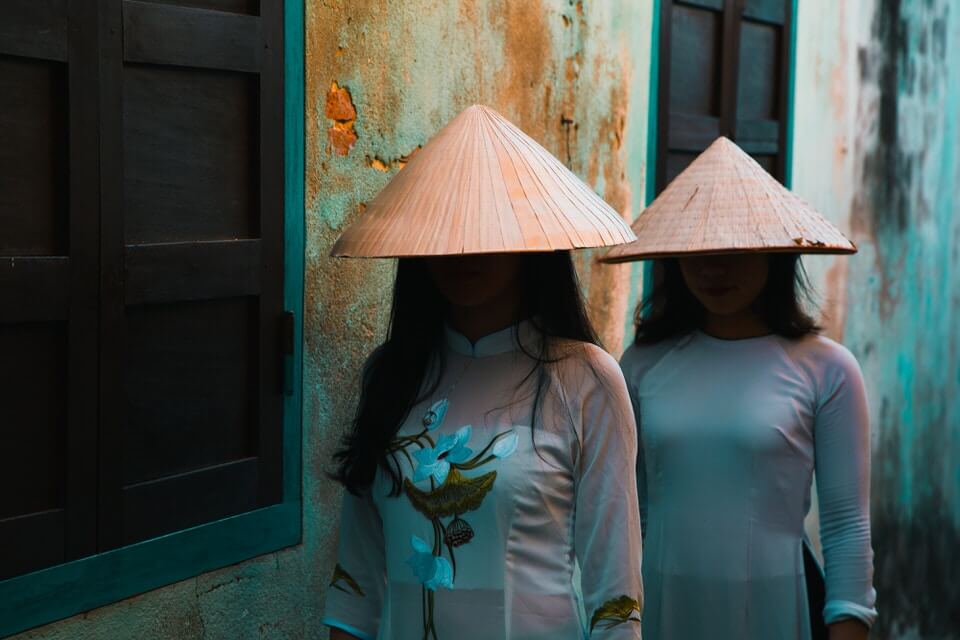
If you’ve only got a week to play with it’s definitely still worth going to Vietnam, but obviously you’re going to have to limit what you do. Don’t spend too long travelling around, make sure you have the time to actually go deep down in a destination, rather than spending all your time on transport.
– My friend Mark Stratton, a National Geographic journalist, wrote this breathless week in non-stop Vietnam itinerary for The Independent.
– Jason and Stacey went to Hue, Hanoi and Hoi An on a hectic week in Vietnam. Take a look and see what they got up to. They managed to fit in cycling, motorbikes and trains – good going for just a week in the country.
– And then here’s a super quick day by day weeklong Vietnam itinerary from TravelHappy. They go to Hanoi, Nha Trang, Halong Bay and Ho Chi Minh City.
Take a look at their Vietnam itineraries, and then come back and check out my two week itinerary to see how you can adapt and change to fit in what you’d like to see in Vietnam.
Two week itinerary for Vietnam
Honestly, my itinerary for two weeks in Vietnam is the best you’ll find. In short you start in Hanoi, go for an overnight tour in Halong Bay, fly down to Hoi An, then train to Da Nang and onto Ho Chi Minh City. Perfect distance in two weeks.
READ MORE: The BEST Two-Week Vietnam Itinerary on the Internet
It’s pretty much the top two-week Vietnam itinerary on the internet, as proven by the Google search results. I know of quite a few people IRL who’ve followed the itinerary over two weeks and had a brilliant time. Also, many, many more who’ve emailed or commented and said they had a great time following the two weeks.
Four week itinerary for Vietnam
And if you’ve got four weeks in Vietnam, you can have a brilliant time!
Follow the two-week itinerary I set out and then add some time in Hue and Mui Ne along the way, and go to Phu Quoc for a week at the end. That’s it, that’s all you need to do to enjoy a brilliant four weeks in Vietnam.
10 best activities for backpackers in Vietnam
Some backpackers fly to Vietnam to see how it is doing after the war, while others want to experience the blood-pumping classic outdoor activities and extreme sports.
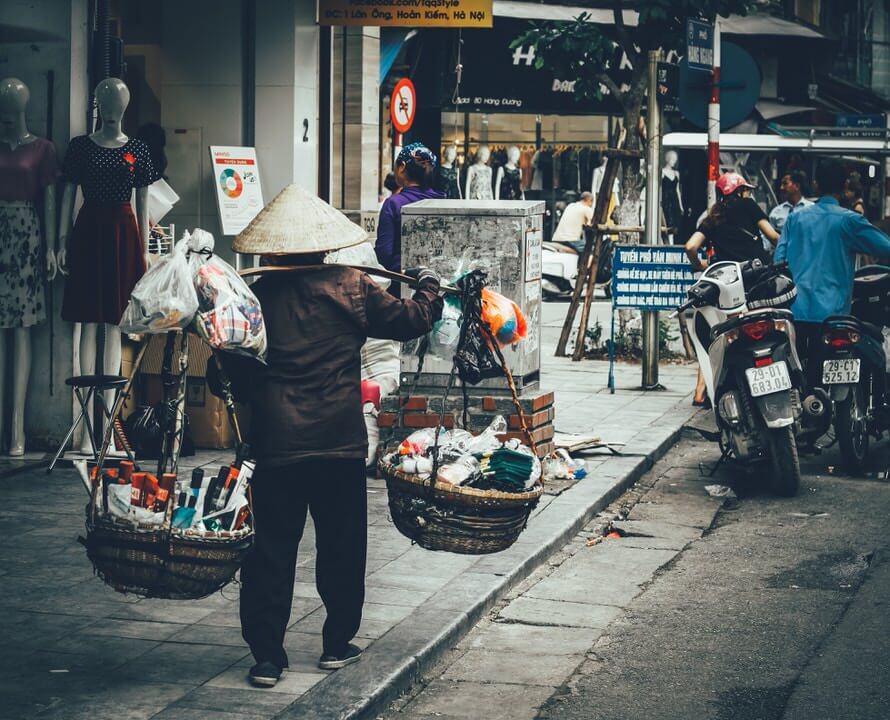
On the quieter side, Vietnam has ancient temples and yoga retreats for those looking for a retreat to refresh their body and mind. Do you want to dance until your brains and legs shut down or want to taste soul-pleasing authentic Vietnamese delicacies? Vietnam has all that!
CLICK to see all the COOLEST ACTIVITIES IN VIETNAM
Vietnam is a relatively inexpensive country to explore and one of the safest destinations in Southeast Asia. Now, here are top 10 activities backpackers can do in Vietnam to make the most out of their trip.
1. Conquer the Mount Fansipan
Looking for a heart-racing activity when backpacking in Vietnam?
Try and conquer Fansipan, the highest peak in the country. Often dubbed ‘the Roof of Indochina’, this tough challenge takes three days to claim your victory. The trek takes you through many stunning remote sites and ends with the most rewarding charismatic view of Vietnam from the top.
As of October 2017, backpackers have to climb the Mount Fansipan with a guide that you can arrange at one of the many agencies in Hanoi or Sapa.
2. Sandboarding in Mui Ne
Known as the adventure sports capital of Vietnam, Mui Ne is the world’s second best sandboarding destination.
Mui Ne boasts breathtaking red as well as white, coastal and desert dunes. You wake up at sunrise and head out to the summits of awesome dunes when the sand is not too hot. It’s the perfect time to practice and enjoy sand surfing, rolling down the dunes. Whether you are new to this or have ever tried this, rent a board and have fun goofing around and rolling down the dunes. Once you get confident, move to the daddy tunes to try your luck with standing, for more fun.
3. Discover Phong Nha-Ke Bang Caves
Voted a UNESCO World Heritage Site in 2003, the Phong Nha-Ke Bang National Park houses the oldest karst mountains in Asia.
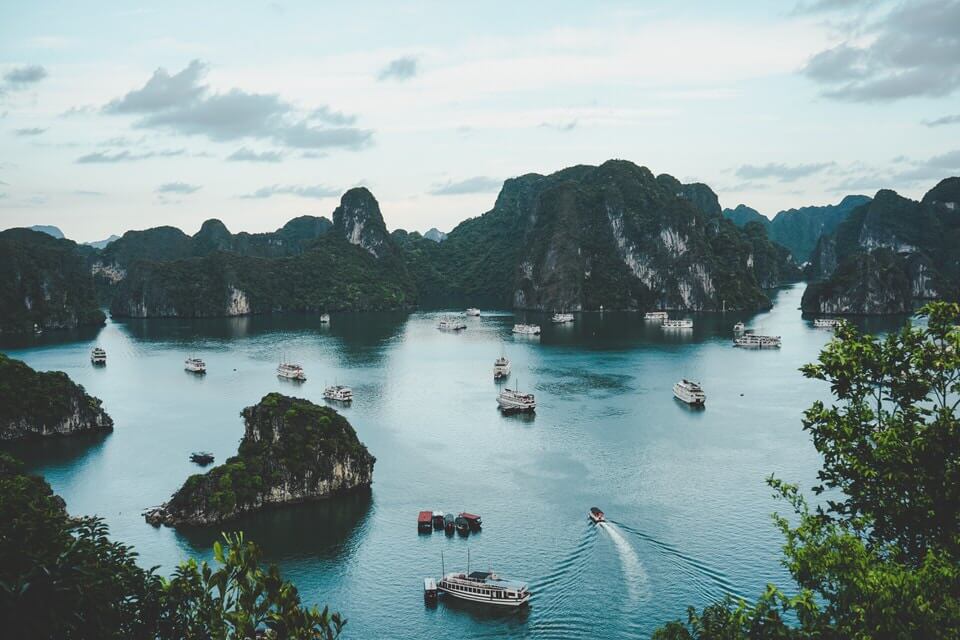
Having hundreds of cave systems with extraordinary scale and length, and fantastic underground rivers, Phong Nha is a paradise for speleologists on our planet. Additionally, the aboveground attractions, such as forest trekking, rural mountain biking, war history, also attract the tourists.
4. Visit the Hoa Lo Prison Museum
Sprawling in downtown Hanoi, this thought-provoking, historical site was built and used by the French administration in Vietnam for political prisoners. During the Vietnam-American war, US prisoners of war nicknamed it the ‘Hanoi Hilton’.
Today, the prison has been converted into a museum with most exhibits, including a horrifying array of whips, shackles and other instruments of torture. You will see tiny solitary cells from the French-colonial period. A small section of the museum demonstrates how well US prisoners fare as compared to the brutality shown to the Vietnamese by the French.
5. Motorbike trip from Saigon to Hanoi
Riding from Saigon to Hanoi or vice-versa by motorbike is one of the best ways explore the country like a locale. Take an ultimate plunge, rent a motorbike while in Vietnam and hit the roads from end to end. Travellers often take Highway 1, the most obvious route.
However, there are far more spectacular, adventurous and less trodden ways to ride between these two popular cities in Vietnam.
6. Explore the temples and pagodas of Hue
In central Vietnam sprawls the ancient city of Hue. The city is home to temples and pagodas offering tourists a glimpse of the country’s colourful and spiritual past.
The seven-storey Thien Mu Pagoda is the major highlight of the city. It was found in 1601 and rebuilt several times throughout the centuries. The To Mieu Temple Complex is another popular tourist attraction in this area. It’s a walled compound where you will find urns of former emperors housed in a shrine. The largest and most important one is that of, the first emperor of the Nguyen Dynasty.
7. Buy eco-friendly handicrafts
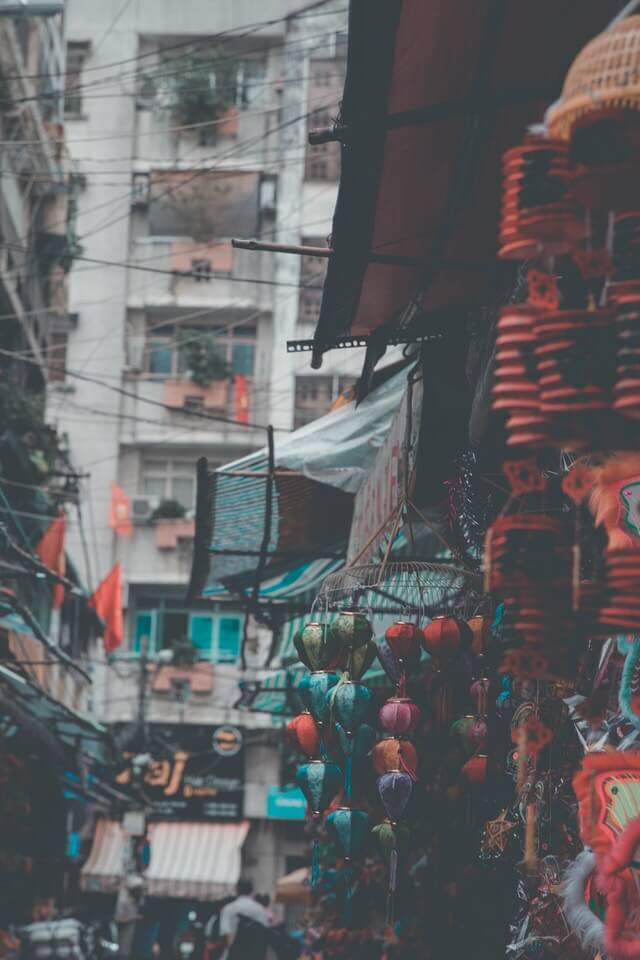
Take home beautiful eco-friendly handicrafts, created by disabled artisans, as great Vietnamese souvenirs.
These items are mostly crafted of recycled soda cans and telephone wires. You can also shop for fabulous handwoven cloth and handcrafted jewellery in Vietnam. You will find an excellent variety of all these items, mainly in Hue.
8. Taste local Can Tho food
Are you a food-loving backpacker? Stop at Can Tho, nestled in the Mekong Delta region.
Since backpacking is all about experiencing a foreign land just like a locale, this area serves as heaven for food-loving backpackers. Have banh mi, a well-loved sandwich and Vietnamese breakfast stable at the best-selling street stall. Pair it with the strong, aromatic Vietnamese coffee.
#9 Swim in the East Sea
Boasting a stunning coastline stretching over 3,000km, the East Sea is balmy and blue throughout the year. You will find rocky coves, beautiful sand beaches, rugged islands and hedonistic beach towns dotting the coastline.
#10 Visit Tra Que Vegetable Village in Hoi An
Looking for a quiet time in Vietnam? Head to the Tra Que Vegetable Village!
Reach the village early in the morning for the perfect treat. Tra Que Vegetable village organises cooking classes where you can learn to bake regional corn pancakes and a few other delicacies. The roads are quite empty; so you can enjoy a nice bicycle ride with your dear ones. Though buses in Vietnam are also available, you should take a bicycle to move around at your own pace, to enjoy the most.
MORE VIETNAM ACTIVITIES: I checked out 11 travel blogs to see what their owners thought were the coolest things to do in Vietnam, take a look.
Cool Things to Do in Ho Chi Minh City
Best ways to get around Vietnam
I love the trains in Vietnam and wrote a whole post about travelling Vietnam by train here. I’ve done three overnight trains in Vietnam and would definitely recommend doing it for the experience… maybe not for the comfort though.
Check the prices for your Vietnam trains, buses, flights and ferries here…
Hiring a motorbike in Vietnam is also really popular.
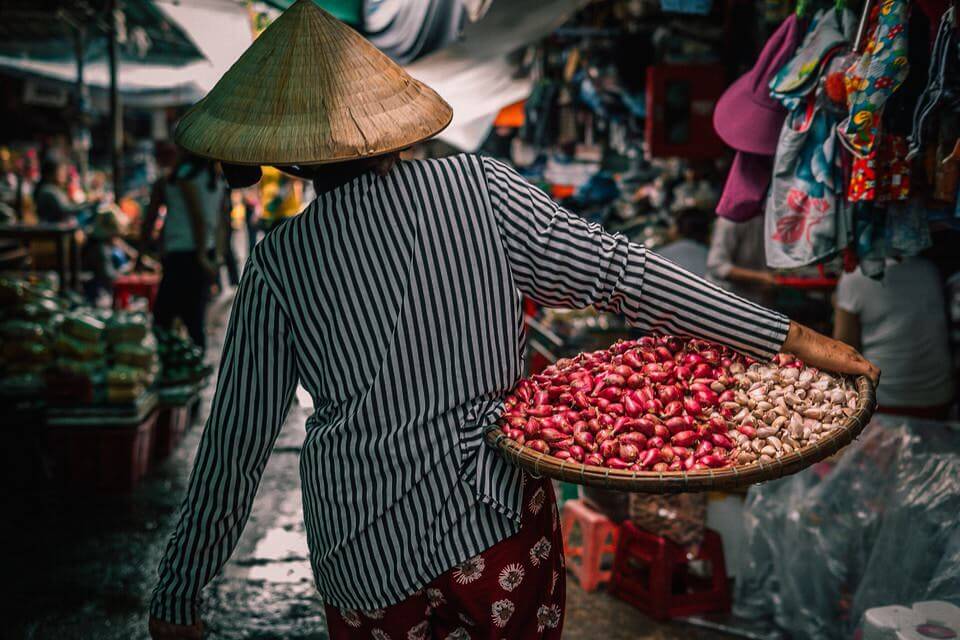
Vietnam is a vast country: both vertically and horizontally. The vast expanse also means that you get to witness a range of temperature variations offering a variety of flora and fauna. Vietnam has beautiful mountains, mesmerising sand dunes and stunning beaches.
There’s so much to see in Vietnam, but before you start travelling, it is important to check the commuting means available for you such as buses, trains, planes and bicycle rickshaw to name a few.
Now, let’s check them out.
Vietnam on a bus
Buses are for people with plenty of time on their hands and who aren’t too fussy about comfort. You can travel short distances within a city or long distances across and down the country.
Public buses commute between cities’ bus stations. To get to bigger places, take local transport to get you to the city center. Buses are in reasonably good shape, but the same can’t be said about the roads. Some are meant only for the brave of heart. You’re gonna be bouncing around!
Pin me for later!
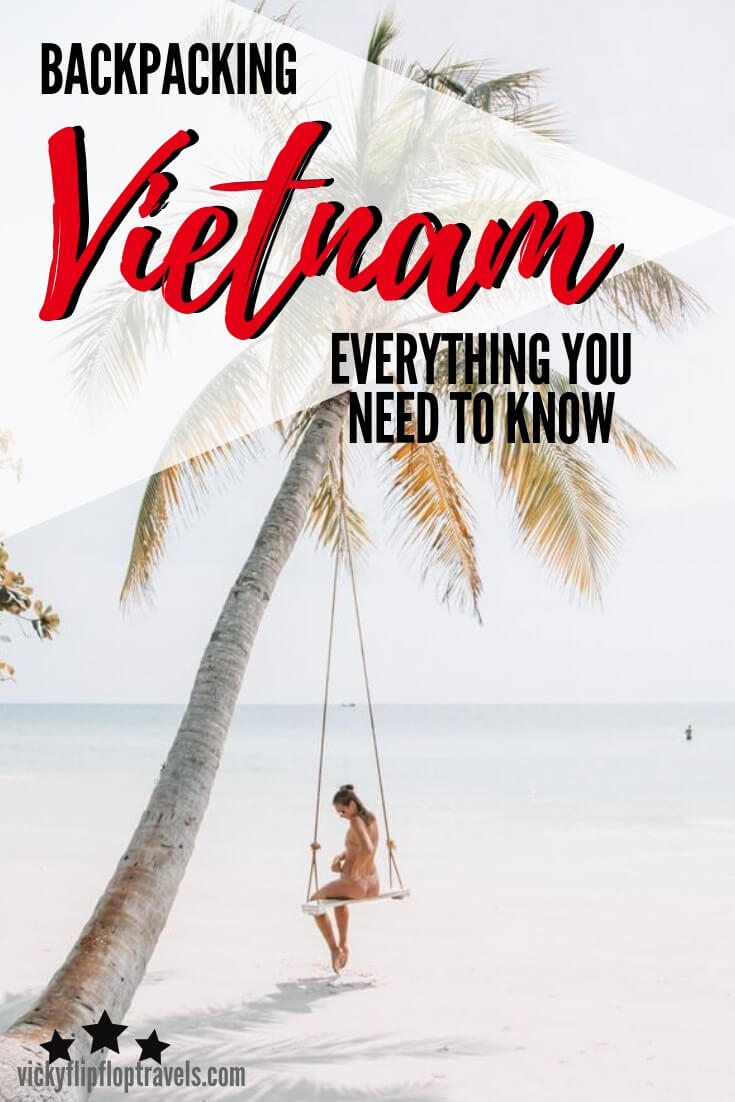
Vietnam on a plane
If you’re travelling a long distance, go by plane. It can be pretty cheap if you book well in advance. For example, from Ho Chi Minh in the north to Hanoi in the south, it’ll take a couple of hours and cost just £40. However travelling the same distance by road could take days, but cost less than £10.
Be a smart traveller. Book in advance and you can get it even lower.
There are more than 20 airports in Vietnam – the key airports are in Hanoi and Ho Chi Minh City. There are also airports in Da Nang, Can Tho, Hue, Nha Tsang, Da Lat and Phu Quoc too.
Some of the main international airlines operating in Vietnam include Air Asia, Singapore Airlines, Vietnam Airlines, Korean Air, Thai Airways, Hong Kong Airlines, China Southern Airlines and Jetstar.
There are a wide range of domestic flights too – Jetstar Asia, VietJet Airlines.
Vietnam on a train
Faster than a bus, but slower than a plane, trains ensure you don’t miss the beautiful scenery on the way. Trains are one of the cheapest ways to travel around Vietnam. Services are available all over the country. You can take a train to Hong Kong, or into the neighbouring country of Cambodia.
Overnight train travel saves money on accommodation, while making it quick to travel to a far off distance too. When traveling with family or a group of friends, it’s a good idea to buy 4-berth soft sleeper cabins for privacy. Even if there are only 3 of you, buy the fourth to have the whole cabin to yourself.
READ MORE: How to Travel Vietnam by Train
Vietnam by taxi
Perfect for shorter distances, taxis are easily available and affordable too as compared to international rates. Just make sure, you stick to well-known taxi companies such as Mai Linh and Vinasun. They are safe to travel even at night. Average rates range from 12,000d to 15,000d per km.
App-based cab services like Uber and Grab are also available in most of the cities in Vietnam. You can opt for these too.
Vietnam by boat
If you’re in Vietnam, you have to try some travel by boat. You can opt for boat tours of one day up to an infinite amount.
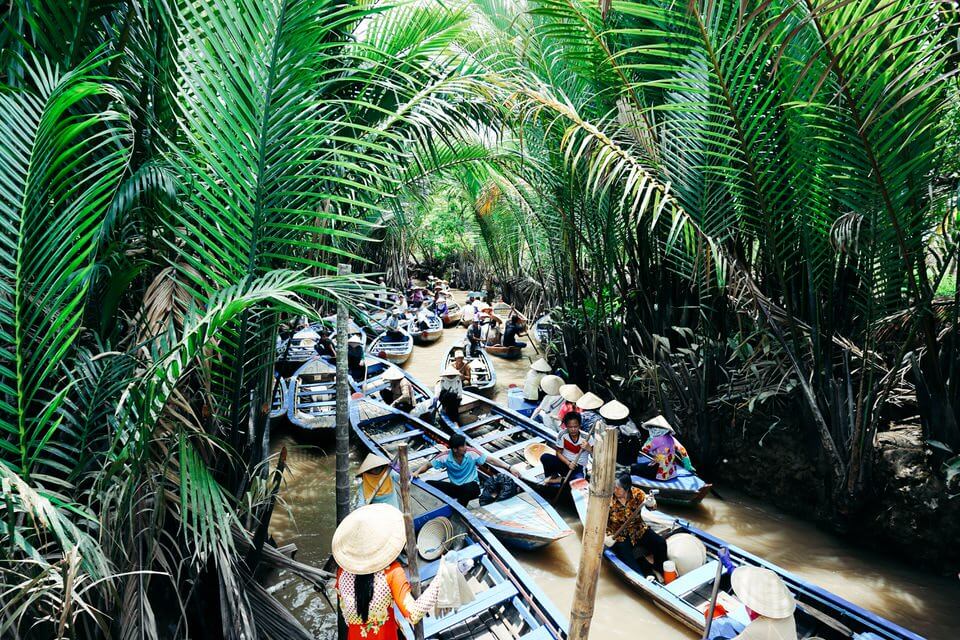
Halong Bay is the number one boat destination in Vietnam. See above for a description of why you should visit Halong Bay when you’re backpacking Vietnam.
The other most popular destination for boat rides in Vietnam is Hue. Here you can go snorkelling and fishing.
Of course, if you want to see the old Vietnam, the way the Vietnamese used to, you need to take a boat ride down the Mekong Delta. It’s mesmerising.
Vietnam on a cyclo
Cyclos look like bikes, but are known as bicycle rickshaws. They have a seat in front and a driver pedaling on the back. But you must hire a trustworthy and reliable cyclo driver, especially if you are out to see the night life in Vietnam. To enjoy it fully, you need to be in safe hands.
They may demand a hefty price, you must do some negotiation before riding them. Though they have been banned in congested cities, they are still available in most of the cities and you can cite them easily.
The average fare for riding a cyclo is between 12,000d and 25,0000d for a short ride. For longer and night rides, you may be charged 25,000d and 40,000d.
Vietnam by bicycle
If you want a real adventure, travel Vietnam by bicycle. Definitely one for the adventure junkies among us.
Although, I did it. I cycled 700km through Vietnam with Intrepid Tours, it was incredible.
If you don’t fancy ten days of cycling, it’s cheap enough to cycle in cities such as Hoi An, Dalat, Hue and Ninh Binh just as soon as you get there. Just ask at your hostel or your local tourist information centre to find out where you can hire bikes from.
Best beaches in Vietnam
Vietnam’s beaches are amazing. With it being such a long country there are over 2000 miles of coastline to enjoy.
There are spectacular secluded coves with carpets of white sand and crystal clear waters for snorkelling, and fun ‘party’ resorts with watersports, beach bars and party boats. There’s a beach for everyone in Vietnam!
Here are my top 5 beaches for you to try while you’re in the country.
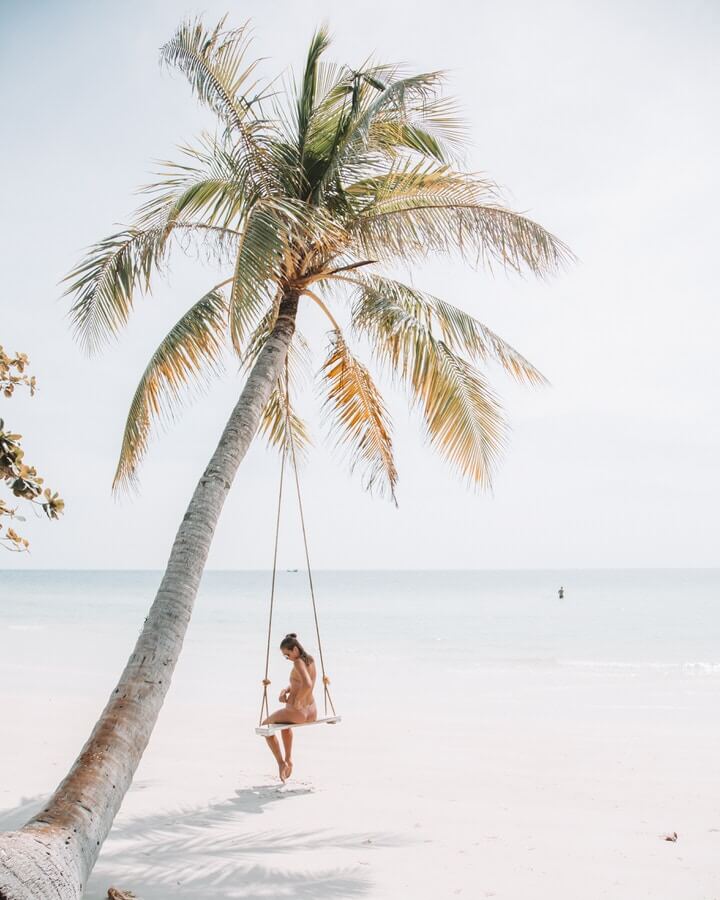
1. Ganh Dau, Phu Quoc
Ganh Dau Beach is a Phu Quoc beach gem. With white as white sands and towering lofty palms fringing the shoreline, this idyllic Phu Quoc beach can be easily accessed via a newly paved path from the nearby traditional Vietnamese fishing village.
2. Doc Let Beach, Nha Trang
Doc Let Beach has over 11 miles of pure white sandy shores.
Known for its shallow turquoise blue crystal waters, this impressive bay can be divided into distinct areas. To the north, you’ll find a cluster of guesthouses and beachfront hotels, bars, cafes and restaurants where all the tourist action can be found.
To the south, you’ll find a quaint wooded outcrop that is a peaceful sanctuary, making it the ideal place to escape.
3. Mui Ne, Phan Thiet
Located on a beautiful stretch of sand with swaying palms and lofty dunes, Mui Ne in Phan Thiet is both charming and exciting. The beach’s great surf is perfect for a host of daring water sports, which includes kitesurfing, sailing and surfing. Not too far from Ho Chi Minh City, Mui Ne Beach is the perfect weekend getaway destination with loads of hotels, restaurants, bars, shops and boutiques.
Cycling through here (y’know, that time I cycled 700km through Vietnam) I knew that I’d want to come back to Mui Ne some time for longer. Definitely seems like the kind of place you could chill for a few weeks in.
4. Ho Coc Beach, Ho Coc
Golden sands, the rolling inland sand dunes, together with the clear blue waters make Ho Coc beach one of the best beaches in Vietnam to stop off at.
Weekends are busy and full of life, but come the week, you’ll soon discover you’ll own the beach. Stretching 3 miles, this chilled out Vietnam beach has impressive dunes, boulders, clear blue waters and tranquility.
5. Long Beach, Phu Quoc
The aptly named Long Beach in Phu Quoc is a 12-mile stretch of golden sand spanning along the coast. With numerous deserted spots, complete with swaying coconut palms, you can relax in a tropical heaven on one of Vietnam’s most beautiful beaches.
Safety Tips for Solo Travellers in Vietnam
Make sure you keep these safety tips in mind if you’re travelling Vietnam alone…
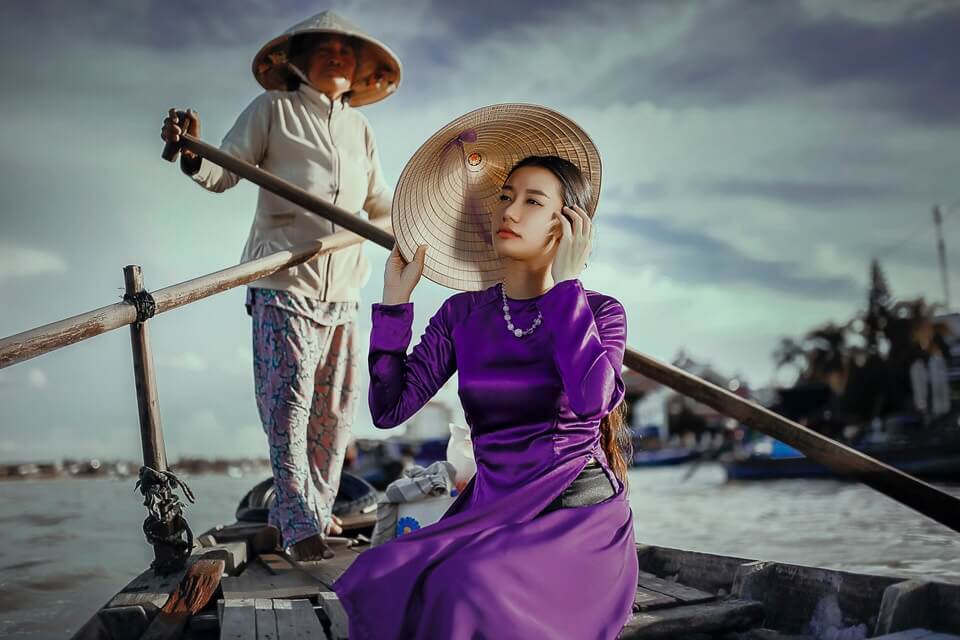
Watch what you wear
Vietnam is still a conservative country – clothes are an important representation of this. Stay away from the skimpy clothes.
This is especially important when you visit temples or pagodas. Do not wear revealing clothes or ones that show too much skin. Shorts and short sleeves are a complete no-no in religious places.
As a solo woman you may be questioned about travelling alone, so some opt to wear a wedding ring. Up to you.
It’s always a good idea to just look at what the locals are wearing, and copy.
Beware of petty thieves
Petty crimes do happen in Vietnam. Pickpocketing and theft of personal items such as laptops, cameras and rucksacks can take place. Do what you can to protect them. Use a good lock on your hostel locker, don’t fall asleep on buses and always keep an eye on your stuff.
Motorbike theft is common; always keep your hand on the bag. A thief can grab your valuables easily. It’s advised to keep your valuables in a bag rather than carrying them in your hands or pockets. Don’t carry your sunglasses or camera around your neck in crowded places either.
Be attentive, you might be travelling and want to enjoy every moment of the trip, but keep your wits about you.
Photography at sensitive places
Vietnam has opened up a lot after a long cold war but still there are areas of high security at military and transport stations. Do not take out your cameras at such places. If noticed, they may request you to delete the pictures or you may have to part ways with your memory card.
This can happen at religious places too. You may have to seek permission to click pictures of ancestral or religious shrines. This is so as locals consider it as a bad omen. Before taking pictures of people, request them, specifically the vendors. They may dislike the act when they haven’t sold anything on that day.
Respect the sensitivities. Judge a situation before photographing anything in a foreign country.
Travel scams in Vietnam
Some fraudulent taxi drivers, retailers and other essential service providers may contact you and use inflated exchange rates, or other such tricks. If you’re planning on travelling with a tour group – research them carefully. I strongly recommend G Adventures, thanks to their dedication to the planet. Click on the link below to see their Vietnam tours.
– Avoid restaurants that do not display prices.
– Book your hotels and train berths from a reputed website.
– Do not fall for fake silk or pearls.
– Check meters before boarding taxis.
Be considerate when you travel
Don’t show off your wealth. Do not wear expensive clothing or jewellery in places where people are living a humble and modest life. Just not cool.
Begging is commonplace in tourist areas. Local authorities are working hard to dislodge begging, so do not offer beggars anything. This can promote the begging culture. Tthey will leave you alone, if you say a firm ‘no’. If you want to do something for them, buy them food or other essential items, but do not make any monetary donation.
Don’t do drugs. Not worth it and severe punishment will follow.
Money and documents
Your money and passport are important. Losing them can be horrendous. Safeguard them by stowing in a safe in your hotel room and always carry a photocopy of the same with you. 5-star hotels may provide you the facility of a safe but others may not. In such a case, you can ask the receptionist of the hotel to keep your belongings in their safe.
I don’t bother with money belts, but if that kinda thing floats your boat, go for it.
Lastly, do not keep all the essential documents in one place. Losing them all will be really annoying.
Daytime travel is best
Travel during the daytime for safety and security. When moving in an unknown country, you should not travel on buses, trains, taxis or move in low light areas at night. Petty crimes may happen in the day, but worse ones happen at night.
JUST want to say though. I felt totally safe for the entire time I was in Vietnam.
Carry a map, or have Google maps downloaded
The big cities in Vietnam are pretty congested. Therefore, it’s recommended that you carry a local map with you all the time. Reception counters at hotels have free maps for you to use.
Remember to pick up a business card for your hotel when you leave to explore the city, just so you remember the name when it gets late.
General safety in Vietnam
Vietnam is largely safe. There are some places infamous for gangster activities, drug dealing and illegal gun possession besides other horrible things. Obviously, stay away from such places!
The best time to travel to Vietnam
The first time I visited Vietnam I went in August. It was so hawt in Ho Chi Minh City – so hot. As soon as you left the air con of the hotel room to go outside you’d be drenched in sweat.
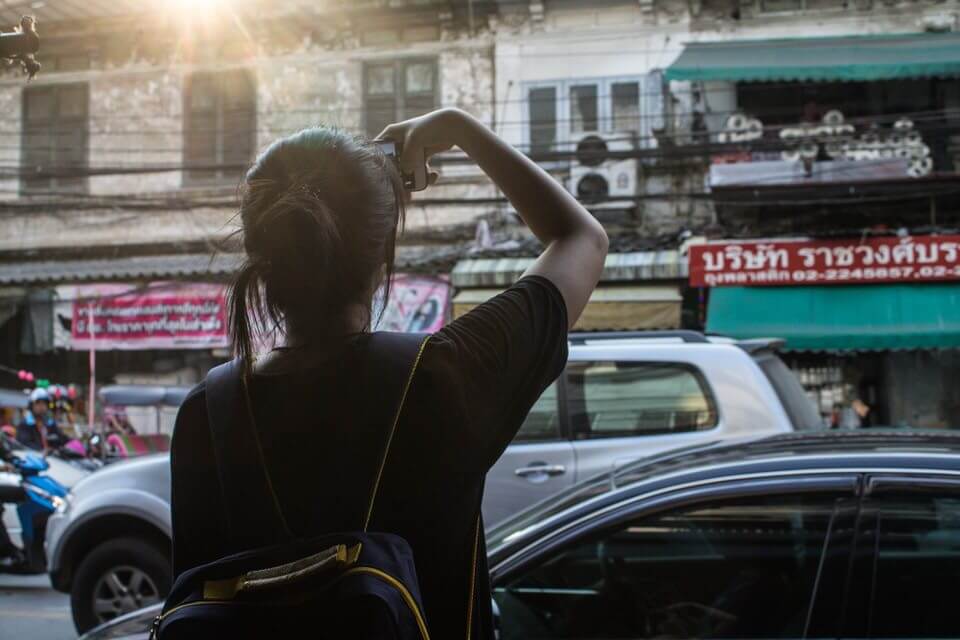
I don’t remember the rest of the country being as hot, or even anywhere close to unbearable, but remember it gets hotter as you go further south.
The second time I went, it was January and February. Up north, in Hanoi, it rained a lot. I’d wanted to go to Sapa but decided not to because of the weather. So, keep that in mind if you’re up north at the start of the year. As we cycled south, on a 700km biking trip, the weather just got better and better. And then, by the time I reached Phu Quoc, the weather there in February was absolutely perfect.
I’d definitely recommend being south in February. Just know that there’s a good chance of rain up north though.
That’s just my experience of the best time to visit Vietnam, but let’s take a look at the traditional advice dished out for us holidaymakers.
When to go to Vietnam
The fact that Vietnam is a 1025 mile-long country, means that there is extremely varied weather from north to south. And for this reason there’s not really just one best time to visit the country.
Vietnam has a tropical monsoon climate, dominated by the south or southwesterly monsoon from May to September and the northeast monsoon from October to April. The north has distinct seasonal variations, while in the south, the weather kind of stays temperate and similar all year round.
Southern Vietnam
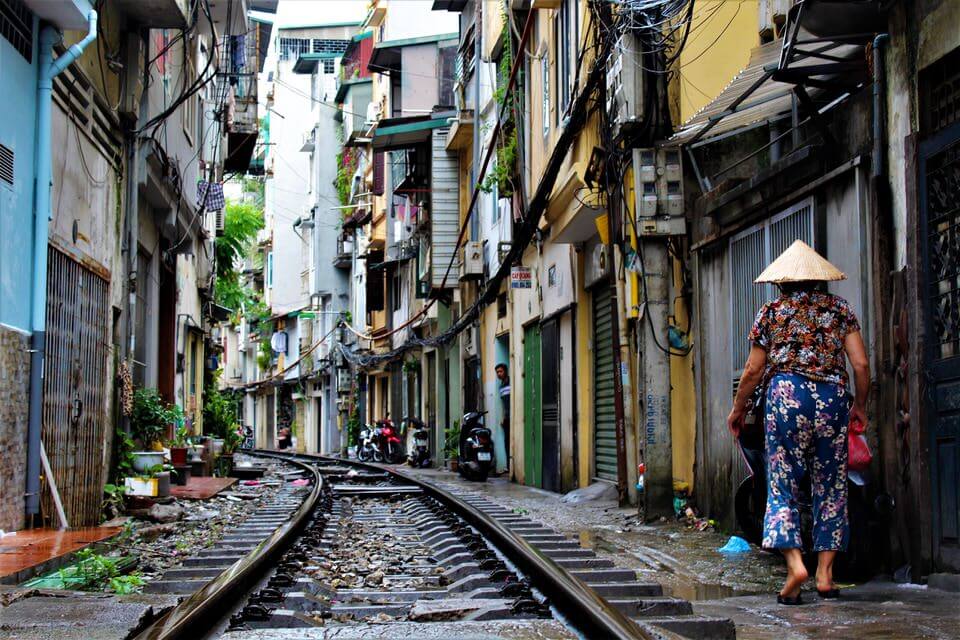
The dry season lasts from December to late April or May in Southern Vietnam, and the rains from May through to November. The rain tends to fall in brief afternoon downpours so it doesn’t mean you should avoid this time of year all together, unless you’re planning on visiting the Highlands. Then I’d wait for the dry season.
Although, if you want to visit the MeKong Delta, be aware that it can flood. Day time temperatures tend to waiver between 20 and 40C, during the hottest months. Temperatures are cooler at night, especially in the Highlands.
Central coast
The rainfall pattern is reversed on the central coast. The wet season starts around Nha Trang in November and through to December. Further north it lasts much longer, from September to February.
From June to August you can expect the temperatures to be in the upper 30s, which is when many a tourist and local escapes to the hills.
Typhoon season in this part of Vietnam usually lasts from August to November. This is when you’re most likely to be hit by typhoons, torrential rain and hurricane-force winds. I’d recommend you avoid this time of year!
Northern Vietnam
The best time to visit Northern Vietnam is generally October to December when it’s nice and warm and sunny. Afer this the cold winter sets in until March.
Between May and August you can expect the summer maximums of around 40C, although in Hanoi it’s a bit friendlier at 30C. Summer is also rainy season up here though, and it can be pretty hot and sticky.
Best time to go to Vietnam
If you are planning on visiting the whole country, like with my two-week Vietnam itinerary, then overall, autumn (Sept-Dec) and spring (March and April) would be the best time to visit Vietnam. Of course, with global warming and everything else, the best times to do anything can vary greatly.
And of course, if you go out of season, you get to go cheaper. If it were me, I’d go on the edge of the traditional best times to visit Vietnam, and keep my fingers crossed.
Vietnamese food you have to try
Vietnamese cuisine is comparatively healthy, and always rich in flavour. From authentic seafood specialties and rice and noodle dishes, to a variety of soups and pastries – there are plenty of delicious foods in Vietnam to choose from.
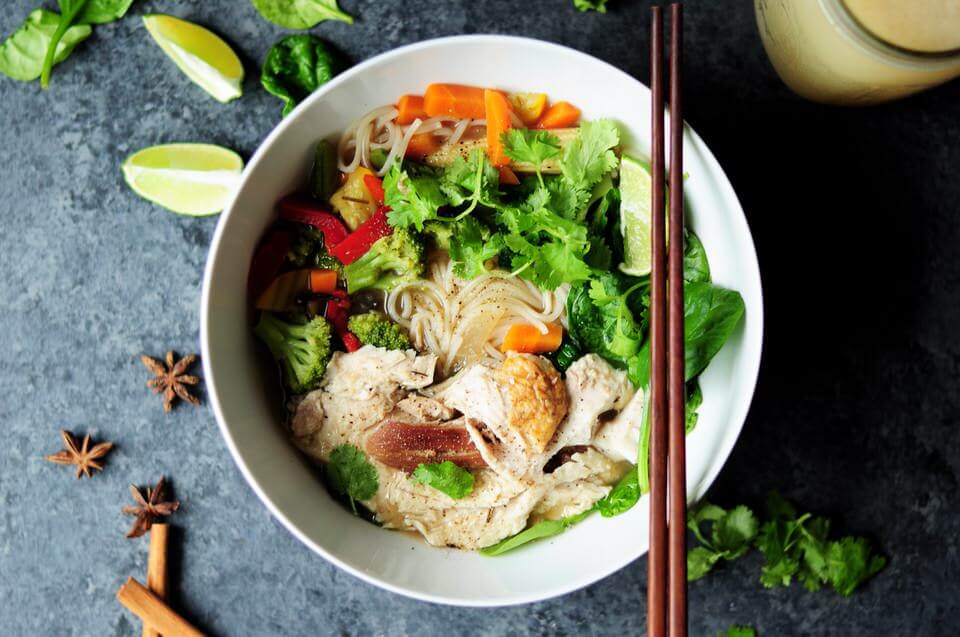
Lucky for us backpackers Vietnamese specialties are best when they’re found at street markets, food stalls, and old-school eateries. To help you find your favourite dish, here are the best Vietnamese foods to try when you’re on a backpackers budget.
1. Banh mi
Ideal for breakfast, Banh mi is a French-inspired baguette sandwich usually filled with a different choice of fillings such as omelet and freshly made pate. What’s interesting about Bahn mi is that not everyone in Vietnam makes it the same. For example, in the north, this tasty sandwich contains only basic ingredients like pata, bread, and margarine, while in the south they put everything from cold cuts and sausages to chili sauce and cheese.
I lurrrve banh mi, and the fact that it usually costs less than £1 from a street food vendor makes it all the better.
2. Pho
Pho is the most famous Vietnamese food and consists of rice noodles served inside a soup with beef and greens like bean sprouts, onions, and lime wedges You’ll also get to choose between chili sauce and fermented fish also known as nouc cham. This dish is typically ordered for breakfast and you can find it at a local Vietnamese restaurant or a street market.
I ate it for breakfast, lunch and dinner one day – seriously it’s that good and that popular. You’ll find it at tiny roadside street stalls, often with just one person serving it on a camping-style stove with just a few plastic chairs and a table gathered round.
3. Goi cuon
Goi cuon – Vietnamese fresh spring rolls – are also one of the most popular foods in Vietnam. They’re made from noodles, shrimp, different combinations of pork slices, and basil. Some locals like to eat them with a bowl of fresh lettuce or mint on the side. This is basically an appetiser that you eat before lunch or dinner.
The spring rolls are often dipped into a hoisin sauce or ground chili mix. Mmmm.
4. Banh xeo
If you’re in the mood for pancakes, make sure to try the fabulous Banh xeo (sizzling pancake). Made from turmeric and rice flour, these Vietnamese pancakes are usually filled with pork, shrimp, fresh herbs, and bean sprouts.
To eat Banh xeo like a local, roll your pancake in rice paper and dip it in a spicy sauce.
5. Cao lau
Originally from Hoi An, Cao lau is a pork noodle dish that consists of rice-flour noodles, won-ton crackers or crispy rice paper, pork, and bean sprouts. Of course, there are many places all across Vietnam that serve this flavourful dish, but everyone will tell you that for an authentic bowl of Cao lau, you need to go to Hoi An.
READ MORE: How Much it Costs to Be in Hanoi
6. Banh Cuon
No visit to Vietnam is complete without trying the amazing rolled cake also known as Banh Cuon. It is basically a combo of ground meat like shrimp, pork, or chicken, onions, steamed bean sprouts, cucumber, local ham, and minced wood ear mushrooms.
Despite its savoury ingredients, this dish tastes surprisingly mild. Of course, like many Vietnamese dishes, this one also needs to be dipped in a nuoc cham sauce. You can buy Banh Cuon from many roadside vendors all across Vietnam.
As I say, the best food in Vietnam is found in the street stalls lining the roads, in my opinion.
7. Cha ca
Vietnamese Cha ca is probably the best-known seafood specialty in the country. Chunks of white fish are sautéed in butter and mixed with spring onions and fresh dill. The dish is served with peanuts and rice noodles.
Hanoi’s Hoan Kiem district is definitely the best place in Vietnam to try Cha ca.
8. Cơm tấm
Cơm tấm translates to ‘broken rice’ and it’s one of the favourite street-stand foods in Vietnam.
Recipes for this dish vary from city to city, but the traditional way of making Cơm tấm is by adding fried eggs, green onions, and different meats to the broken rice. Popular toppings for this Vietnamese snack include shredded pork skin and barbecued pork chop. The good news is that you can find Cơm tấm practically on every street in Vietnam.
9. Bột chiên
Bột chiên is quite popular in Saigon and the recipe for this dish is really simple. They take huge chunks of rice flour dough and fry it in a wok until the texture becomes crispy. The next step is to add an egg into the mix and serve all of this with green onions, shallots, and slices of papaya.
Most people eat this for breakfast and so you’ll find bột chiên food carts all over Vietnam.
10. Mi quang
Mi quang is a reasonably priced Vietnamese dish that’s especially popular in Hanoi. Expect to get a simple bowl of meat noodles with additions such as shrimp, mint, peanuts, rice crackers, and turmetic broth. There are also many herbs that come with this dish including sliced banana flowers, basil, lettuce, and coriander.
Food tours in Vietnam

One of the best ways to find out about the many, many different things to eat in Vietnam is by going on a food tour. I did two food tours while I was backpacking in Hanoi, and one in Ho Chi Minh City.
On a Vietnamese food tour you’ll be taken round your destination’s best restaurants, and sometimes the markets, and introduced to the best foods of Vietnam. It’s a great way to eat loads, get to know the local culture and to meet some fellow Vietnam backpackers too.
I’d strongly recommend doing a food tour in Vietnam while you’re there.
And the top 3 drinks to try in Vietnam
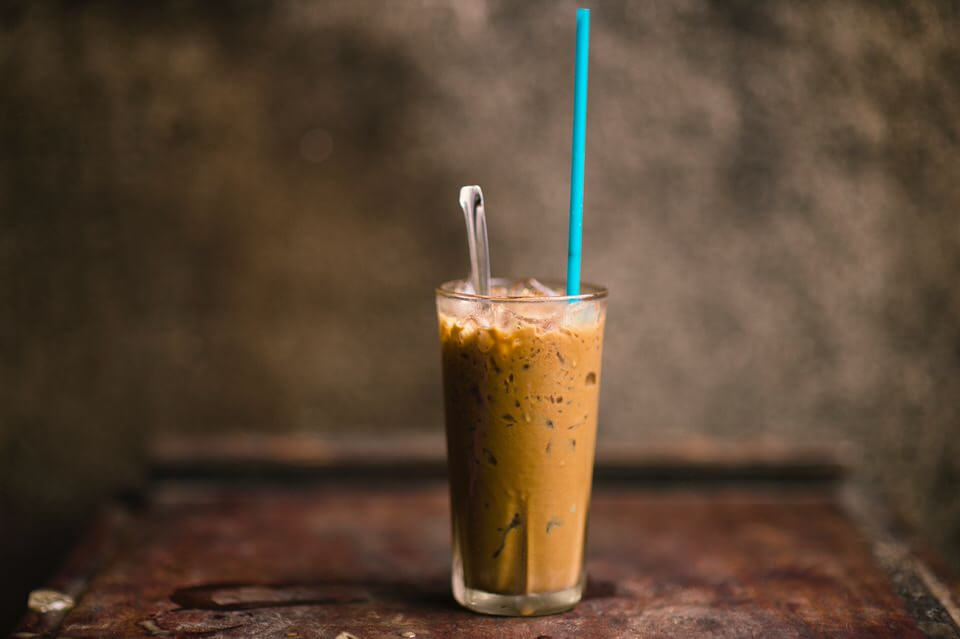
1. Weasel Coffee
– Weasel coffee is known as the ‘best coffee in the world’. When you find out how it’s made though, you’ll be grossed out. It’s the purest bean you can find, gives you the biggest buzz of all the coffees, but it’s made from a coffee bean pooed out by a civet weasel.
They sniff out the best and fleshiest coffee beans to eat and then once consumed, their digestive enzymes work to ferment the beans, breaking down the proteins inside them.
Once the broken down beans are pooped out, the coffee farmers wash them, then dry for weeks until the outer skin falls off. They’ll then dash the beans with sugar, salt and butter and roast them to create a delicious coffee that can sell for more than £50 a cup around the world.
In Vietnam the coffee is then known as ca phe chon, or civet-cat coffee.
It was indeed smoky, rich and with a hint of chocolate – mmm delicious weasel poo coffee.
2. Egg coffee
– When I first discovered egg coffee I thought it was the best taste and texture in the world. Honestly, I had one every day. It’s this thick delicious coffee, made from condensed milk, strong espresso and egg yolks. I knew that, but I didn’t quite register what that meant. And then I did a food tour and saw and heard how they were actually made, and after finding that out and learning how many calories were in that delicious condensed milk, I decided that I should probably stop having one a day.
But anyway, despite all that. You need to try at least one egg coffee while you’re in Vietnam, because they’re delicious.
3. Bia Hoi
– Mmm, bia hoi. Bia hoi is kinda a state of mind, rather than a drink. That’s how I like to think of it. Bia hoi is basically the practise of meeting on a street corner and drinking beer from the barrel. Bia hoi is kinda the freshest beer you’ll ever drink. It’s fresh, with no additives, so you have to drink it on the day. The first time I went to Vietnam, bia hoi was like 20p, the second time it had gone up to 50p – for a little glass of beer.
Bia hoi is one of the great cultural things to do in Vietnam, don’t miss out!
And a drink not to try – the Dalat wine. It is grim. I’d suggest you leave all your fancy wine drinking ways at home and stick with the coffee and beer!
Money in Vietnam
The exchange rate in Vietnam is crazy.
You’re a millionaire with around £45. This can make it difficult when paying so make sure you get to know the colours of the notes before you hand them over, or you could end up paying a lot more than expected.
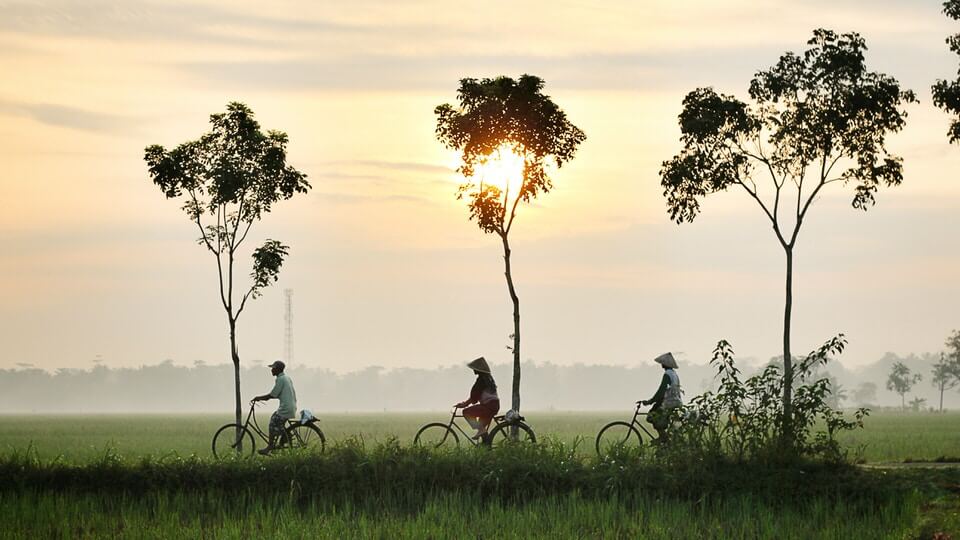
I’ve put together some price guides for Vietnam, so you know how to plan your budget for Vietnam. As a rough guide you can expect to pay around £10 getting from the airport in both Hanoi and Ho Chi Minh City. A night’s accommodation in a decent hostel will be less than £10, while a basic private room will be around £20.
A lot of the attractions – like the Temple of Literature and Hao Lao Prison, in Hanoi, are less than £2 to get in. A massage is about £10 and a food tour around £15. A bottle of water is around 40p, while some bhan mi from a street seller is around 80p.
Vietnam is great value.
A Guide to the Prices in Phu Quoc
How Much Will I Spend in Hanoi?
The Cost of 3 Days in Ho Chi Minh City
Money saving advice for Vietnam
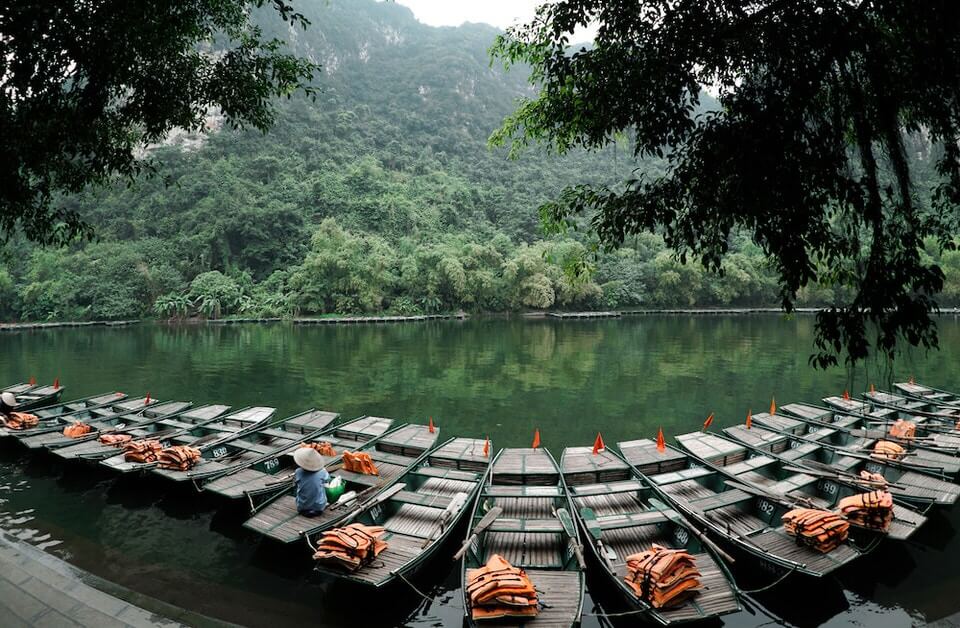
1. Book your tours there
From looking at the price of tours before I left the UK and once I got here, the price differences were huge. If they can afford a website they’re going to charge more and could just be sending you to the cheapo ones anyway.
If it was me I’d wait till I got there to book. You can spend an hour shopping around at the tourist information centres to get the best deals, especially if there are a few of you in a group.
2. Walk as MUCH as possible
Yeah, it might be hot but how often do you get the opportunity to be hot?
When you go walking in the city, in the day, you never know what you might find.
3. Haggle with the market stall holders
In Vietnam, there’s so much choice and an abundance at all the markets. If you know what you want to pay for something, and it’s reasonable, stand your ground and haggle for that. Hotels, taxis, tours – if you don’t like the price just go to the next person.
Just don’t take the piss!
4. Take dollars with you
You can’t get Vietnamese Dong outside of the country so you need to get dollars, and exchange. Yeah you’ll lose money with the two exchanges, if you’re not from the US, but it’s just easier than taking pounds, or your currency. Also, you can pay for the big things with dollars to make it easier.
Remember though, if you do pay with dollars, they don’t give cents change so you’ll usually end up paying a little bit extra.
5. Go to the countryside
When you’re in Vietnam, don’t just stick with the big cities. If you travel further out and into the countryside you’ll save money on everything, just like any country!
What to buy in Vietnam
Here’s your ultimate shopping guide for Vietnam – so many nice things to buy!
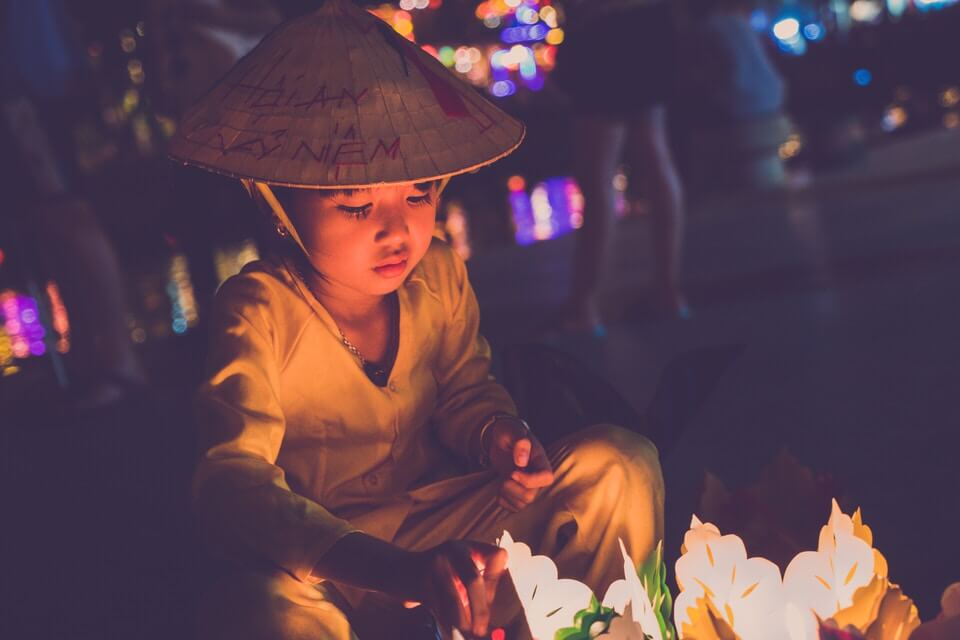
The Vietnam shopping experience is something you will remember for the rest of your life. It’s fun, of course, but you’ll also get hounded by stallholders with cheap products and of course, experience the infamous haggling. If you want to get the best bargains in Vietnam, and enjoy the hunt, then I definitely recommend you read this section.
What to shop in Vietnam?
Traditional and homemade items are magnificent in Vietnam – and make for a great present for your friends back home, and you.
Ao Dai
The national costume of both men and women is a tight-fitted dress worn over slack of different colours. It can be found in any fashion bouquet or tourist friendly market. For fittings, tailors are available. It can be custom-made from around $35 to $100. You can get designer Ao Dais too.
Silk
The quality of the silk you get in Vietnam is unmatchable. It’s produced from the cocoons of the silkworm by using manual looms. Available in a variety of colours and patterns, check out the souvenir shops and fashion boutiques for accessories, dresses, shirts and ties at fairly good prices.
Vietnamese embroidery
The northern Highlands and Sapa offer embroidered scarves, clothes, small bags, pillow case and many more exclusive items. In the main square of Sapa, they’re prepared right in front of you.
Pearl jewellery
Stick to the coast for a wide range of authentic pearls and jewellery such as earrings, bracelets, necklaces, pendants and rings. You can also find accessories made up of gemstones and gold.
Guoc moc – wooden clogs
You’ll probably see men and women wearing these with their Ao Dai. These are the traditional footwear for both, but can be worn with other outfits as well. It can be modified to suit your style.
Souvenirs
Silk paintings
The most iconic art of Vietnam is the silk painting made from drawing and painting on homemade rice paper. The art is popular all over the world. The paintings are soft, elegant and flexible – you can buy them from the souvenir stores.
Lacquerware
Lacquerware is a type of traditional craftsmanship found in dishes, furniture, vases, bowls, and paintings. It takes about four months to make a single piece. A lot of art galleries in major cities sell lacquerware at a fair price. Many display daily lives of the Vietnamese people or the mythical creatures.
Wooden and bamboo products
Stunningly carved salad bowls, hats, baskets, trays, and other such items are prepared from bamboo. They’re eco-friendly and cheap too – ranging from $13 to $45. This is a great gift for you to bring home – nice to remember your Vietnam backpacking adventure every time you prepare your lunch time buddha bowl, hey?
‘Do’ paper postcards and notebooks
‘Do’ paper is produced from the Do tree. Do is a wild plant found along the riverbanks. Before the advent of modern paper, it was extremely popular. Today it’s used to manufacture watercolour, ethnic greeting cards, folk paintings and bamboo bound notebooks. Hemp covered notebooks, Do paper cards with embroidered squares cost approximately $2. Bamboo notebooks cost $1.50. You can buy them from many of the bookstores in Vietnam.
Why not keep a little diary of your adventures while you’re away?
The biggest markets in Vietnam
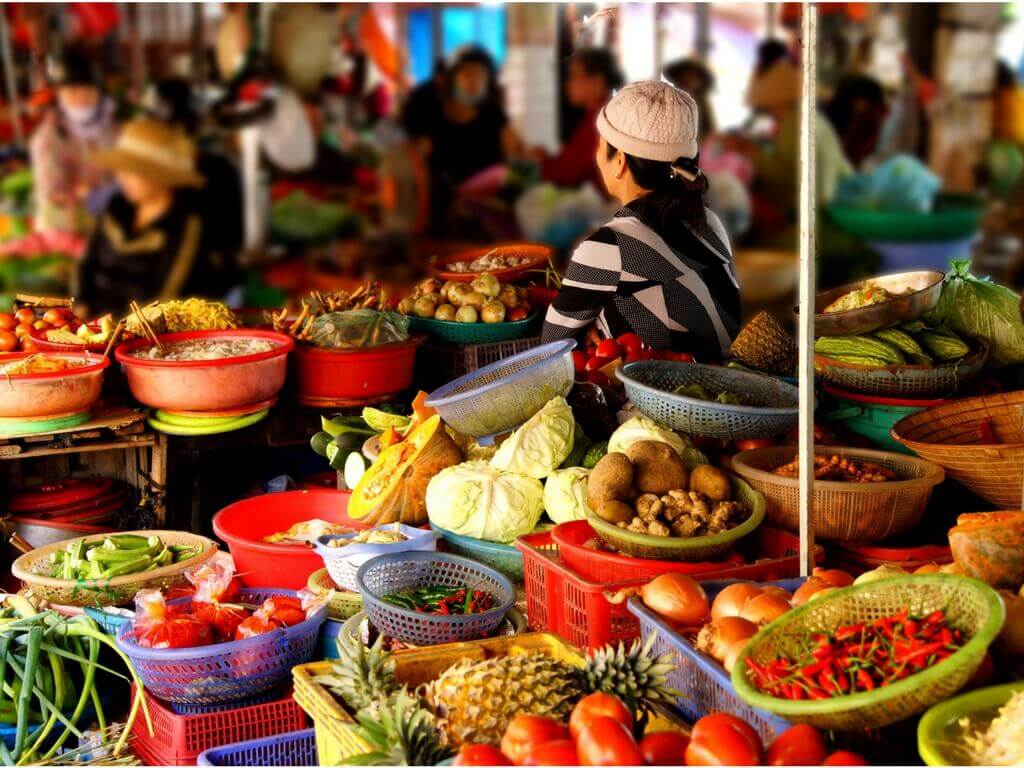
Hanoi markets
Hanoi is an absolute shoppers paradise with loads of opportunities to buy cool Vietnamese things to take home.
- Hanoi offers – colourful lacquerware, silver, gems, scarves, silk, and hand-tailored clothing is available at affordable prices.
- Famous places – Hang Gai (Silk Street) for silk shops, Nha Tho Street for fashion accessories and home décor items
- There are loads of shopping malls in Hanoi too.
Shopping in Hoi An
Hoi An is famous for its tailor shops where you can get exclusive designs produced just for you. I’ve had shoes made, a few dresses and a jacket before. It’s the best place if you want a bespoke suit, just for you.
- Hoi An offers – tailor shops, fabric and silk, souvenirs too.
- Famous places – Old Town (tailor shops, fabric and silk), Central Market (souvenirs at a better price than the boutique shops).
Dalat
Dalat is extremely popular for flowers. These are sold at stalls outside the market.
- Dalat offers – local wines, souvenirs, deer jerky, candied fruit, wine, artichoke teas locally produced wine.
- Famous places – the Central Market for local wines, souvenirs, deer jerky, candied fruit.
- Other offers – Strawberries are in abundance, they are candied, turned into wine or blended to produce strawberry milkshakes. Locally produced artichokes are turned into tea – actiso or tra atiso. This is where you can get the Dalat wine I was telling you about…
Ho Chi Minh City
Ho Chi Minh City has shopping galore. Anything you could ever want you’ll find here, somewhere.
- Ho Chi Minh City offers – ceramic tea sets, silk lanterns, marble boxes, ceramics, lacquerware, coffee beans, conical hats, home accessories, lighting, furniture, modern art and fashion.
- Famous places – Dong Khoi and Le Li street for souvenirs, Ben Thanh covered market for cheap lacquerware, conical hats, coffee beans.
- Ben Thanh Market is a famous eating area in the evenings.
Vietnam shopping tips
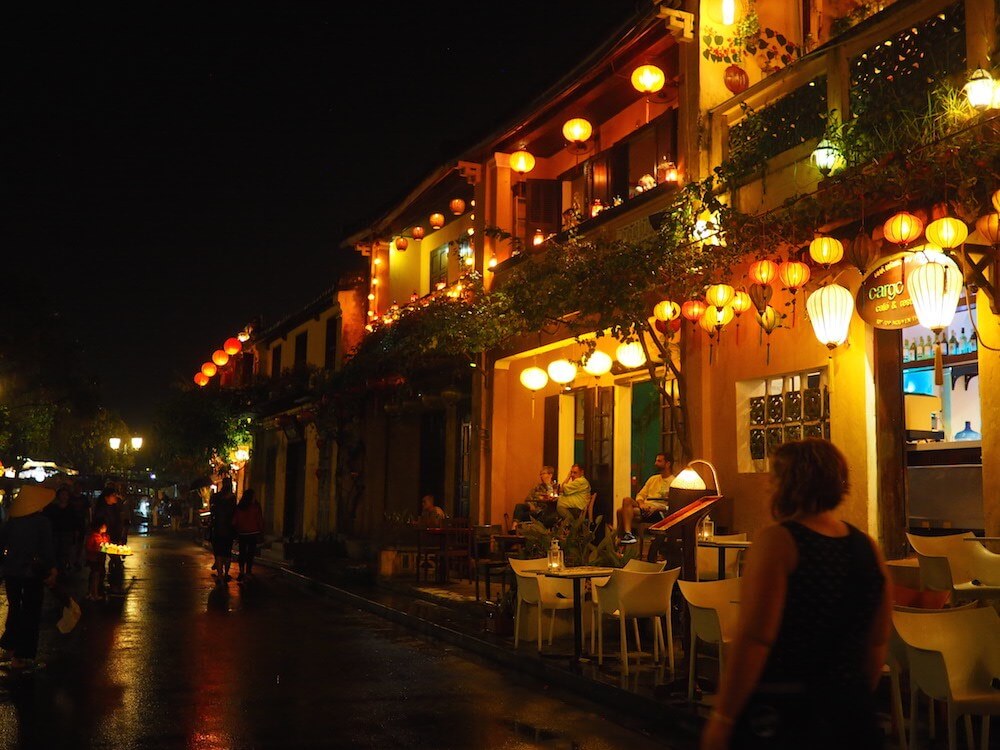
1. Bargaining is an important part of shopping in Vietnam, but not in the malls where the price is pre-printed on the product.
2. There’s no sale culture in Vietnam. If you spot one, be assured that the quality is poor. Luckily, you don’t need to buy them; most of the products are affordable.
3. You can have your shoes, clothes and apparels made to fit your size and in the colour of your choice – just ask.
4. Don’t fall for the price. Remember, ‘you get what you pay for’, and if you can’t remember that, how about – ‘if it seems too good to be true, it usually is’.
5. Don’t buy more than your suitcase can carry. If you do really need that table / 6ft statue / 10 suits, ask about the shipping that most companies will be happy to arrange for you.
What to pack for Vietnam
When backpacking in Vietnam you know you can’t rely on running into a H&M for anything you’ve forgotten, so getting your Vietnam packing right is essential. As a 5ft 9, size 14, there was little to no chance of me finding clothes in a Vietnam clothes shop that would fit my frame.
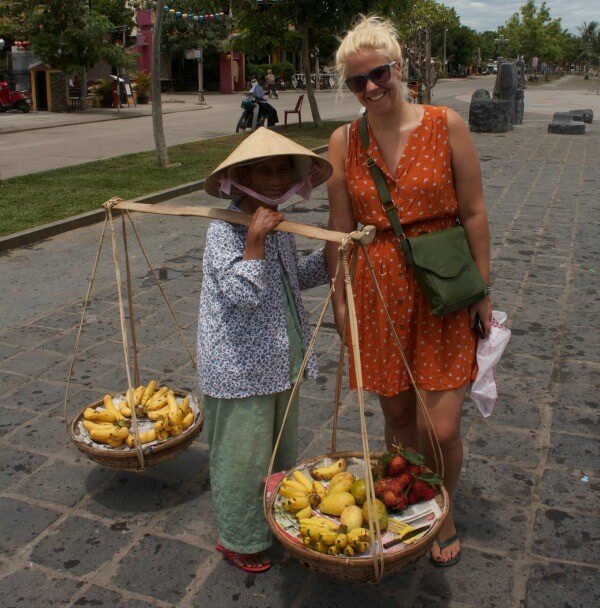
When you’re packing for Vietnam you’ll need to work out what you’ll want for kayaking in Halong Bay, trekking Cao Bang and cycling in Sapa, making it a complicated list.
Here are a few ideas for the absolute basics you’ll need to take when you’re packing for Vietnam.
Toiletries for Vietnam
Aren’t you always surprised at the amount of people on a trip who ask to borrow shampoo, can’t find their toothpaste or are in serious need of deodorant? Make sure you’re not one of them and stockpile on the necessities. You’ll also want to include some strong mosquito repellent if you’re to keep from scratching every inch of your body, oh and some antimalarial tablets just to be safe.
Add a hairbrush, hair bobbles, sun lotion and moisturiser to your list, although, unless you’re heading straight to the country, there are plenty of shops in the cities to buy all this stuff. In fact, you can get most of it from the 7/11s.
Accessories
We’re not talking your whole jewellery box, but essential items like the sunnies, a bum bag and a smaller backpack for day trips and excursions. An extravagant hat you’d never dare to wear at home is also a good item to bring, not just for style but sun protection too.
Part of the fun of travelling in Asia is stocking up at the jewellery shops on the rings, necklaces, anklets and bracelets, so don’t worry about bringing them at all. Just a few extra pounds to buy yourself some treats, and support the local artists and designers.
Footwear
Flip flops and sandals are a must, but maybe think about including some hiking boots as well. They may not be en vogue, but you’ll be thankful when you return from a trip to the Ba Vi National Park blister free. Or, you could just pack trainers – lighter and easier to carry – depends how much hiking you’re planning on doing!
♥
For more advice on packing for Vietnam, check out my
ULTIMATE PACKING LIST FOR VIETNAM
♥
Day time clothes
All the essential light t-shirts, shorts and floaty dresses will do the job. Think: things that are light, easy to roll and can be washed in a sink if it’s a long trip. Bright colours are also great for helping you look the part when you’re somewhere exotic and handy for finding your friends in a crowd. Make sure you pack at least one pair of trousers, or, you can just buy elephant pants when you get there.
Also, take a warmer layer for chilly nights and over air conditioned buses.
Top tip: generally avoid white so you can sneakily get in multiple wears.
Night time clothes
Unless you’re planning to spend each evening in some luxury bar or resort, you don’t need your heels or fancy black tie outfits. A few long, floaty dresses and skirts to cover up the legs from the mozzies at night and a light cardi should do the trick.
Backpacker clothes

Nothing says ‘I’m travelling’ like a pair of harem pants, and in South East Asia they’re almost mandatory. If you’ve got them from previous trips, dig them out and if not, don’t worry because there are plenty of places you can pick up a pair in Hanoi or Ho Chi Minh.
These are the ‘elephant pants’ I’m talking about. Even if you don’t take them with you, I know you’ll want a pair when you get there.
Respectable clothes
From The One Pillar Pagoda to the Temple of Literature, Vietnam has hundreds of temples that you’ll want to see. To make sure you have no troubles entering and remain respectful, carry a few items that’ll cover up your shoulders and knees. A long sleeve shirt, loose trousers and a scarf you can wrap around are your tickets to the gods.
Just pack a sarong, they’re so blummin useful.
Underwear
Always pack more underwear than you think you’ll need – especially if you think your size will be hard to buy for out there – and include a staple white and black bra so no matter your top you’re covered.
When it comes to nightwear, go for lightweight and short sleeve options to keep it cool. Make sure your pyjamas are decent though, just for all those hostels.
Practical items to pack for Vietnam
On every trip there’s a bunch of small, but easily forgettable objects that could really scupper you if you don’t pack them, like an adaptor, padlock, chargers and torch. Also, consider a sleeping bag liner if you plan to stay in rooms the wrong side of 2 stars. And, I quite like to take a pillow case these days. Just in case.
Or, your sarong can always do that job.
Beach stuff
Bikinis, swimming costumes and shorts are all major essentials for the bays of Phu Quoc, Nha Trang and Hoi An. Then pack a simple beach dress or kaftan that can cover you up and don’t forget that sun cream — critical for avoiding the lobster look.
Towels tend to take up a lot of space so opt for a microfibre one for your bathroom time and then get a lighter weight beach sheet for your sunbathing. They’re more practical, a lot bigger and come in bright colours so you can always spot yours from the sea.
Extras and electricals
Obviously your phone can capture most moments but it’s still nice to pretend you know how to capture that critical lighting with an actual real life camera. Add some good books or an e-reader to the backpack as well as some headphones and maybe even a deck of cards — always useful for long journeys and bonding with the locals.
Take a very small backpack to fit all these essentials in.
Important stuff
Finally, but most importantly, you’re not going anywhere without a valid passport. Root it out from the drawer and make sure it’s somewhere handy along with your travel insurance documents and local currency.
Once you’ve got all this packed away into a decent sized backpack, there’s nothing left to do but make sure you’re hauling a whole load of happy traveller vibes and be on your way.
Check out my video on the
top 5 things ALL solo travellers should take with them
And check out my other videos on YouTube!
5 craziest tours in Vietnam
Vietnam’s pristine temples, geological marvels, majestic architecture, and mouth-watering cuisines make it a great place to take a tour, so that you always have someone there when you have a question.

Are you in your 20s on a mission of soul-searching or in your 40s staying young at heart? Vietnam is the right country to let loose. With years of modernisation, there are many parts of Vietnam that remain relatively authentic to their local traditions and beliefs.
1. Intrepid Cycle Tour
Tour Duration: 2 weeks
Cycling the length of the country. Part of me can’t actually believe I did this tour with Intrepid. I cycled from Hanoi, all the way down to Ho Chi Minh City – 700km in 10 days.
Click the link to find out more, but it was definitely one of the biggest adventures and craziest things I’ve ever done.
Check out the coolest tours on GetYourGuide.com!
2. Cu Chi Tunnels Tour
Tour Duration: 5-6 Hours
Cu Chi Tunnels is a network of tunnels that stretches over 250km. They’re the historic aspect of Vietnam War. Created in 1948, the tunnel system assists the Viet Minh in their fight for independence against the French. The tunnels featured sleeping quarters, hospitals, schools, and even kitchens. The digging and building of this underground city lasted for 25 years and housed thousands of people. During the American War, the entire area of Cu Chi was heavily attacked and bombed. Since 1988, the tunnels were opened for visitors.
This amazing and crazy Vietnam tour starts with a ride to the start of Cu Chi. With an English-speaking guide, take a private screening of the official Cu Chi Tunnels. Explore the underground military base and experience the breathtakingly hard life of Vietnam soldiers. Crawl through these mysterious tunnels and feel the underground life. You can also get the chance to fire off war era AK47 and M16 rifles in the firing range nearby.
3. Castaway Halong Bay Tour
Trip Duration: 3 Days, 2 Nights
If you’re looking to go to a paradise where anything goes, then Castaway Island Vietnam is your biggest party destination. This tour is party-lovers euphoria and not meant for people who cannot handle their drinks. If mingling with new people, playing drinking games, and skinny-dipping in the moonlight is your idea of a vacation, then Castaway Island Vietnam should be on your bucket list. The phrases like “Vietnam’s number one party island” and “not for the faint hearted” clearly indicate that you’re not going to a relaxation and sleepy destination.
The tour is perfect for solo travelers. You can make friends within minutes of getting on the boat that takes you to the island. The DJ pumps up great music throughout the night and doesn’t fail to pump out a Justin Bieber song on request. The booze cruise takes you on the island while kayaking through caves and lagoons. This beautiful island is on the most scenic locations in Vietnam and you’re free to do whatever your heart desires.
4. Snake Wine Tour
Trip Duration: 1-2 Hours
Forget eating worms with tequila – Vietnam offers an even more dangerous drink that gives a tasty tipple with a far more potent bite. There are many villages in Vietnam producing snake and scorpion wine. This is one of the craziest tours you can take in this amazing country. The poison is cancels out the alcoholic content of the drink, which means that you can also avoid a pounding hangover in the morning. Over months of fermenting process, the dead snake and scorpions are kept in the yellow bottles. They are later preserved in the liquid that dissolves their poison in the wine.
Traditional Chinese medicine believes that snakes have powerful medicinal properties. This is also the reason you will find delicious snake dishes in Vietnam. On this daring and exciting tour, you can taste the different snake wines of the country and enjoy a luxurious meal of savory Vietnamese cuisine. Some may find this practice cruel or too daring, but for the adventurous you, this is a must try. Pour yourself a medicinal drink, order some delicious food, and enjoy a tour that will be one for the books!
Vietnam is a crazy place. You can find something unique and thrilling amidst the bustling city populations and traffic. Even just strolling down the street and watching 6-lane traffic can be an insane experience. You can take it to the next level with these amazing and crazy tours in Vietnam.
Some of the coolest tours in Vietnam to try…
5. Classic Vietnam: Hanoi to Ho Chi Minh City
This trip covers most of the stops I recommend on my two-week Vietnam itinerary. If you want an easy to backpack Vietnam, without having to do the research, book the accommodation, and work out how to get from A to B, then I totally recommend a group tour.
I also think group tours are a great idea if you’re worried about travelling solo in Vietnam. You’ll instantly make friends and may even find someone to travel with after too. I really wish I’d done more group travel when I was travelling, and I will in the future.
I haven’t done this tour, but having travelled with G Adventures before, I have no worries in recommending it to anyone.
Check out the prices for the Classic Vietnam: Hanoi to Ho Chi Minh City tour with G Adventures, it starts at around £671 for 10 days.
Where to stay in Vietnam
There are some really cool places to stay in Vietnam, and then, there are some really cheap hostels and hotels in Vietnam too. I guess the challenge is, working out where your budget and level of comfort meet. Generally, when I’ve travelled in Vietnam, I’ve paid between £15-20 a night for a private accommodation either with friends or my ex boyfriend, or a room to myself.
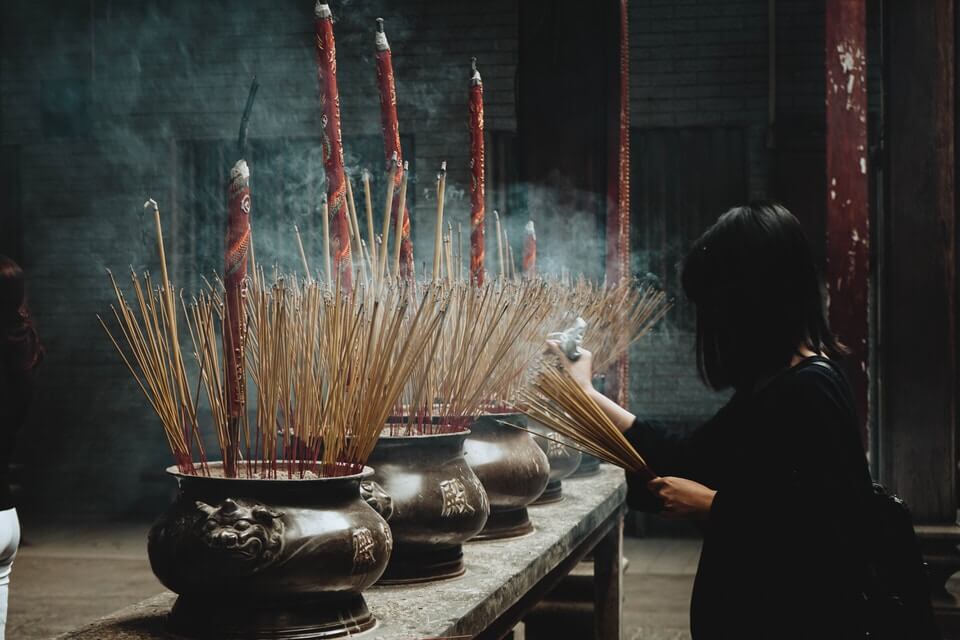
The accommodation is so cheap in Vietnam that I haven’t actually ever stayed in a dorm room there, which, now I think about it, is kinda amazing.
I’ve been doing some research into cool hotels in Vietnam, from Halong Bay down to the island of Phu Quoc and everywhere in between. So here goes, a few cool ideas for where to stay in Vietnam for you.
1. Eco Lodges in Vietnam
Vietnam is home to some really impressive eco lodges. There are some beautifully designed rooms, incredible settings, some right on the beach, and restaurant options and infinity pools too.
The eco lodges in Vietnam are some of the best priced and most impressively located anywhere in the world. You can expect the world-renowned Asian service as standard, as well as huge rooms, classy design and of course, being Vietnam, incredible food options in the on-site restaurants.
2. Vietnam Homestays
Home stays are a great option if you’re looking for a more unique place to stay in Vietnam. When I was on my cycling tour with Intrepid Travel I stayed at one in Mai Chau.
Basically, you’ll be in part of someone’s home. Sometimes the lounge, occasionally a bedroom, but when I stayed we were in a raised wooden hut outside. We actually slept on mattresses on the floor, surrounded by mosquito nets – honestly it was better than it sounds. Also, they’ll make you a traditional home cooked dinner, and breakfast too.
My lasting memory of my homestay in Vietnam was waking up to the sounds of the farmers outside, after a very comfortable night’s sleep.
Homestays are popular in Hanoi, Hoi An and Da Nang too. Try one out for a new experience in Vietnam!
3. Super fancy hotels in Vietnam
Y’know how I said that when you’re in Vietnam, you’re a millionaire? Well, it’s time to start acting like one!
The prices in Vietnam offer the perfect opportunity to try a hotel or two normally out of your price range.
The Reverie Saigon is Vietnam’s only 6-star city hotel, located in Ho Chi Minh City. With lush design, and a kinda OTT entrance it’s a real treat to stay here. You deserve one. There are 286 rooms, all with super deep bath tubs, and you’ll only be a few steps away from the excitement of the centre of the city.
Definitely one for the Instagram.
And then you can crawl back to your hostel.
4. Boat hotels in Vietnam
Staying on a boat in Vietnam, in Halong Bay, is one of the most iconic things you can do. Thanks to the limestone mountains on the skyline Halong Bay is one of the most beautiful stretches of water in the world, in my opinion.
Also, sleeping on a Junk Boat (as they’re called) guarantees a good night’s sleep – thanks to the gentle lapping of the water.
5. Beach hotels in Vietnam
Vietnam has some really beautiful beaches you just need to explore. My personal favourite is Oo Lang Beach on Phu Quoc, but you should also check out the hotels in Nha Trang and around Mui Ne – the surfer’s beach.
Just a little outside of the beautiful town of Hoi An you’ll find some amazing stretches of beach, and beautiful beachfront hotels too. 10 important facts about Vietnam.
5 tips for backpacking Vietnam
The number of tourists to Vietnam has more than doubled in the last decade – crazy hey? I like to think it’s down to me and my two-week Vietnam itinerary, but maybe I should let Vietnam take at least some of the credit.
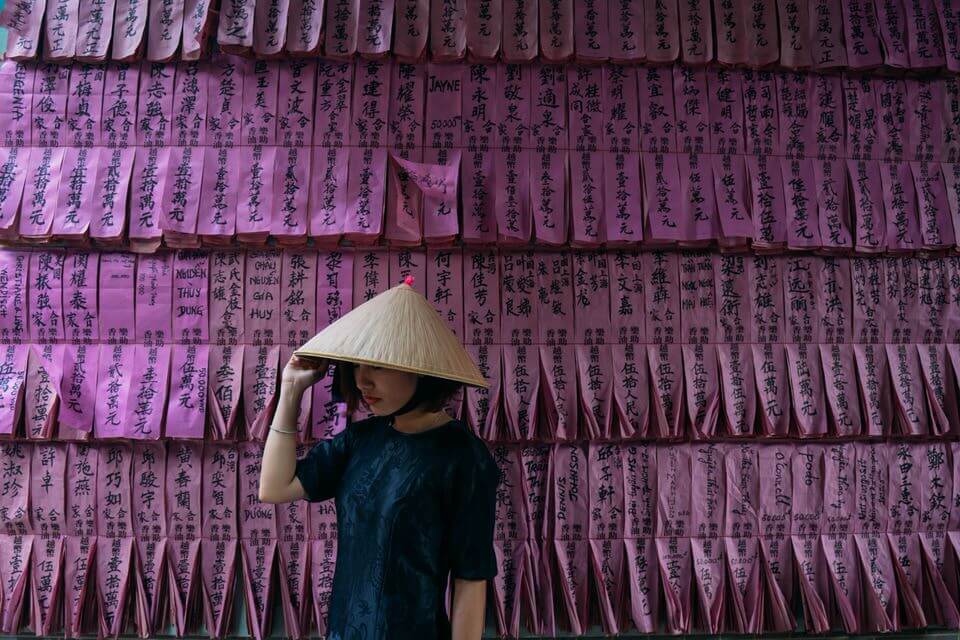
Obviously this huge influx of tourists coming into Vietnam has changed things. Some people are more wary of backpackers, while others love the money it’s bringing in. There’s no doubt that the prices in Vietnam rose from when I visited in 2012 to 2017, more than would be natural in 5 years: rich tourists.
But with the privilege of being a tourist in this world, comes responsibility. Here are a few tips for making sure you’re a responsible tourist in Vietnam, and represent your country proudly.
1. Always make sure of the price of things first
Before you do anything – buy something / eat something / experience something – make sure you know the price. The fact that the money is so complicated in Vietnam, means that you need to be 100% sure of the price before you commit. Whether it’s a taxi, a tour or a tuk tuk ride, be sure you know how much you’re paying and what you’re getting in return.
2. Get used to the tiny chairs!
It’s an iconic scene in Vietnam – a bunch of friends sitting around a table on teeny tiny chairs. The little chairs are ok for Vietnamese people, but tall Westerners are often left looking larger than life huddled around.
Enjoy it and get involved!
3. Be careful on the roads
Crossing the road in Vietnam is quite an art. You need to forget everything you ever learnt about road safety, go against your gut instinct and go for it. Stay calm and alert, and walk out into the road slowly but confidently; the traffic will (usually) give way to you.
4. Be respectful
Know when it’s ok to have one drink too many, and when it really isn’t. Vietnam is a deeply religious country and you don’t want to offend people by not showing respect when it’s due. Know when to cover up, learn a few polite words and smile when it’s the right time.
5. Learn about Vietnam’s history
Vietnam’s history is fascinating, and you only need to learn a little to be able to get so much more from your trip. Much of how Vietnam is today is a direct result of the Vietnam War. There are a lot of conflicts still happening within the country, between the north and south. Many living people today will have known someone who died in the war, or who was deeply affected.
The Vietnam War is still very raw, and so any conversations need to be handled very delicately.
Visa advice for Vietnam
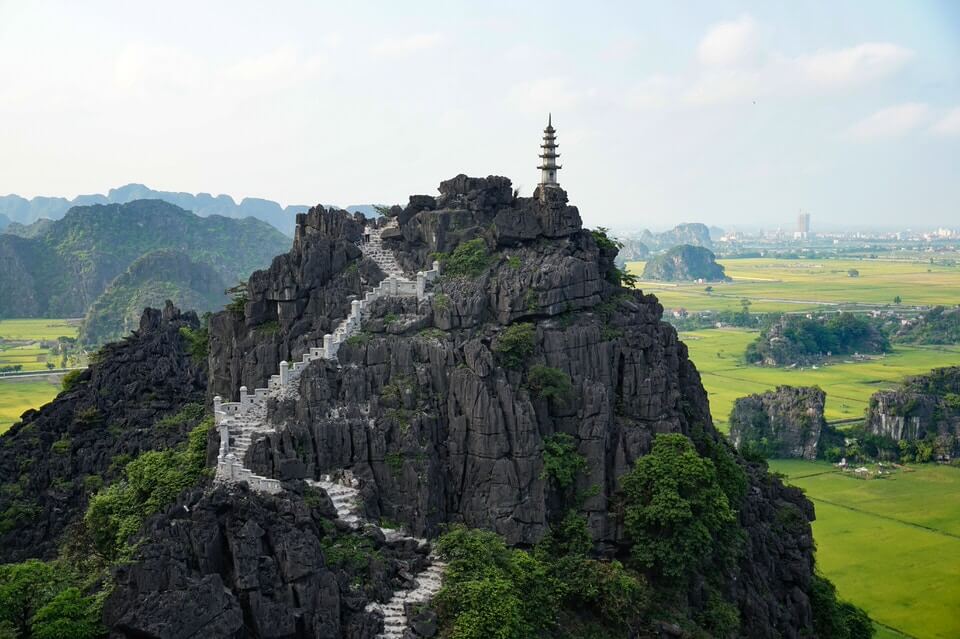
Vietnam visas for US citizens
As a citizen of the United States you are required to have a visa to enter Vietnam. To apply for a Vietnam travel visa you need to visit www.vietnamvisa.govt.vn submit an application form and wait for approval. A travel visa for Vietnam will cost you less than $20.
Vietnam visas for UK citizens
British Citizen passport holders can enter Vietnam without a Visa until June 30th 2018 for a maximum of 15 days. For visits of up to 30 days you can get an e-visa online. For visits of over 30 days you are required to get a visa from the Vietnamese embassy before travel.
Vietnam visas for AU citizens
For entry to Vietnam Australian Citizens must have an appropriate visa. Australian Citizens are eligible to apply for an online single entry visa, valid for a maximum of 30 days here.
Travel insurance for Vietnam
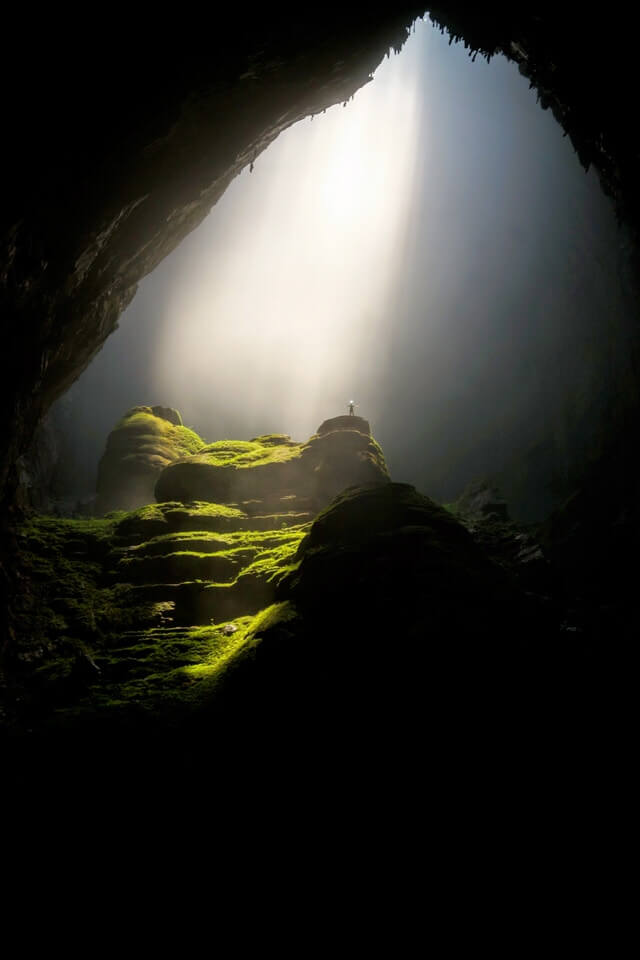
Never travel without travel insurance, especially when you’re travelling to Asia. Anything could happen. Obviously, it most probably won’t, but just in case I strongly recommend you sort it out.
HeyMondo offer 24/7 worldwide assistance with travel cancellation and interruption cover. They also have tailor made policies and cover medical expenses up to $10 million. Click here and you’ll get 5% off your travel insurance with HeyMondo.com too. Check out their App for more details.
The best Vietnam backpacking advice
If you haven’t found the answer to your question about backpacking Vietnam in this mammoth blog post, then check out my quick fire Vietnam advice post.
It’s got to be in there, surely?!
If not, just let me know in the comments box below.
All feedback gratefully received!
Save time and money and check the prices for your Vietnam trains, buses, flights and ferries here…
Pin me for later
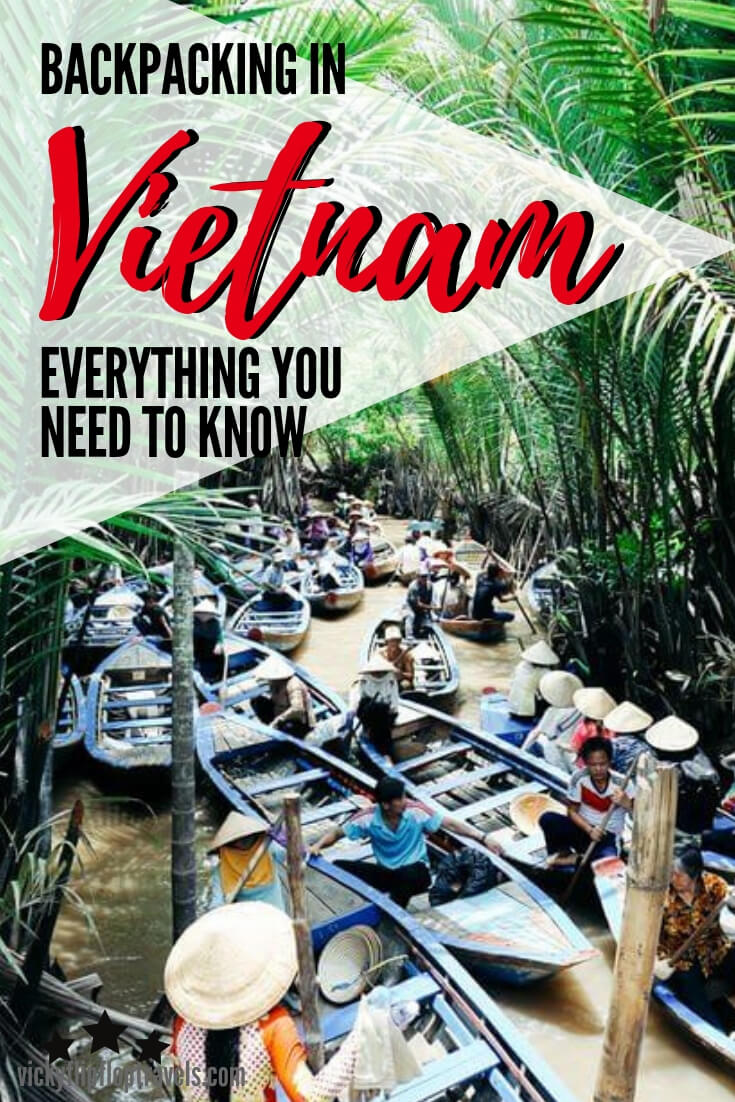

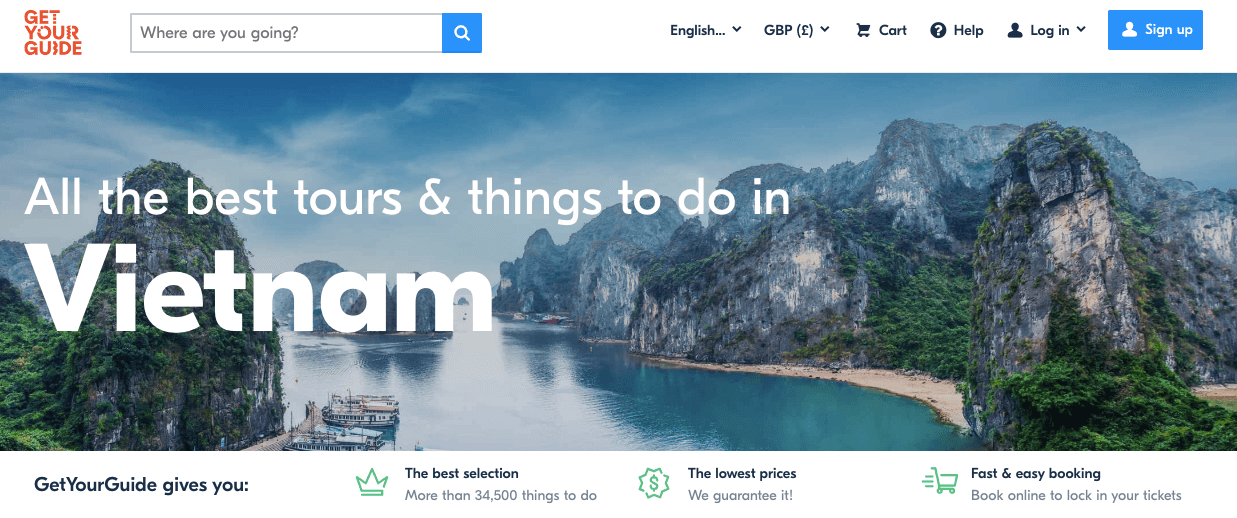


Hi Vicky, we’re booking our 2 week trip to Vietnam all thanks to your amazing help! Quick question though, we’re planning on going to Ho Chi Minh and working our way up the coast and finishing at Hanoi/Ha long Bay. Although i noticed you mentioned starting in Hanoi and doing the opposite, any particular reason for this or does it really not matter which way round you do it? Thanks, Rob!
Hi Rob, great that you’re following my route! I don’t think there’s really a right way round. We just did it that way because of a wedding we were going to. You’re going to have an amazing trip – enjoy!